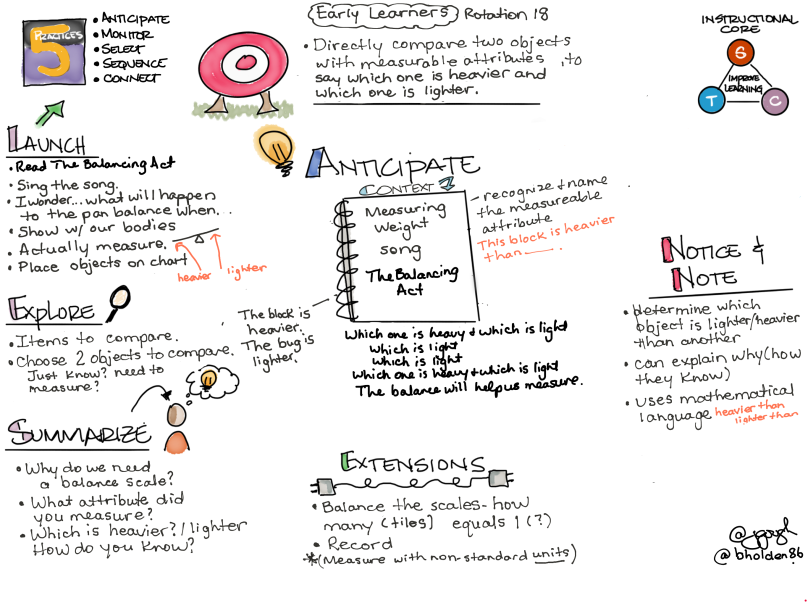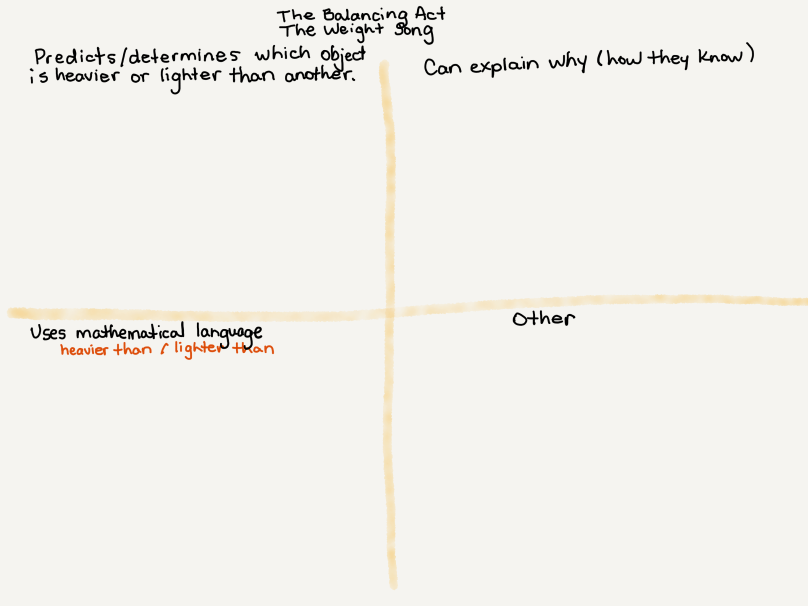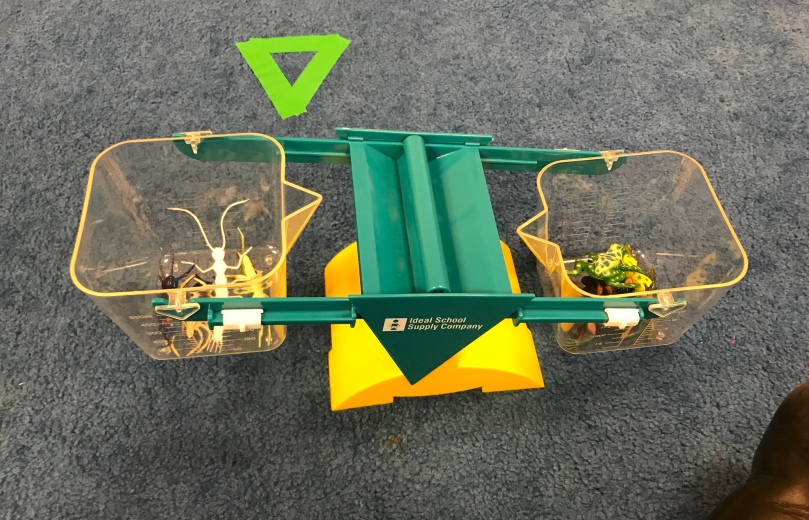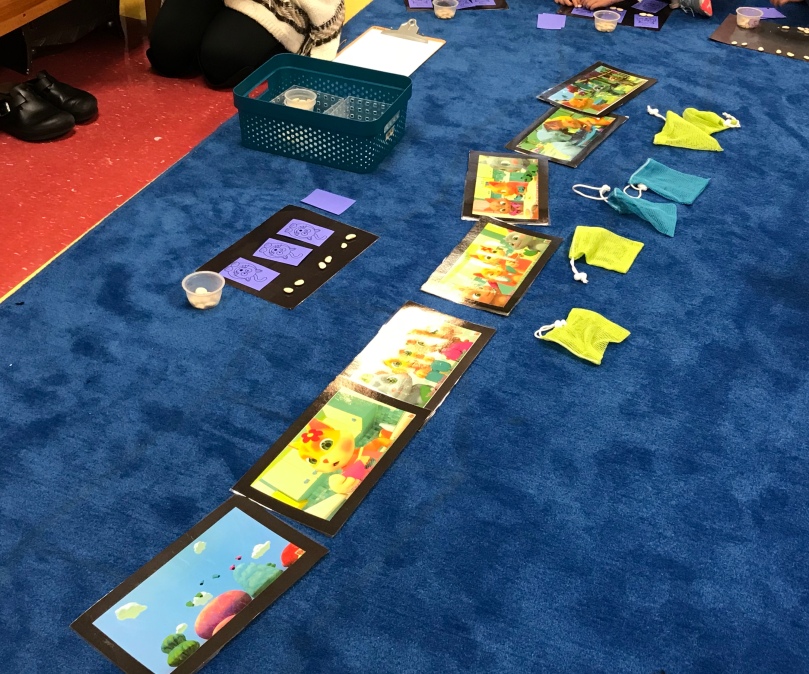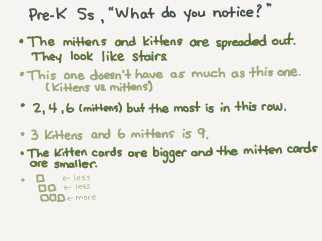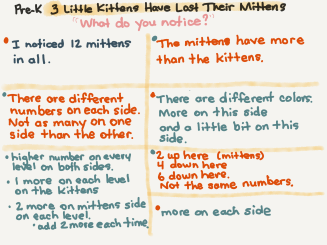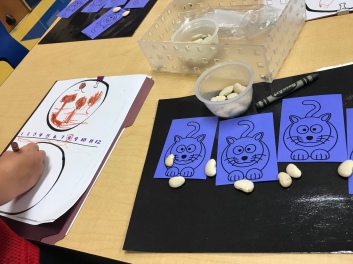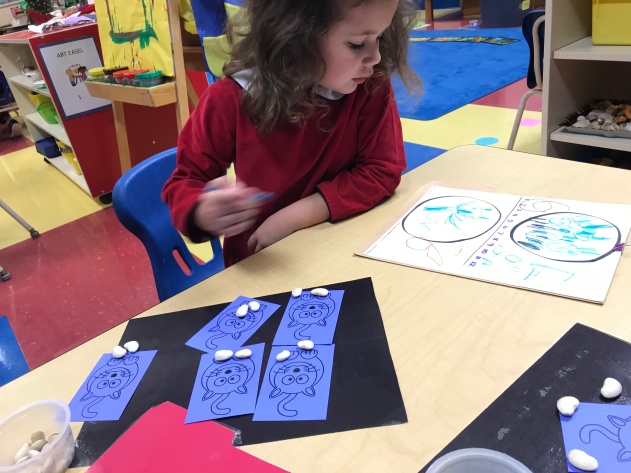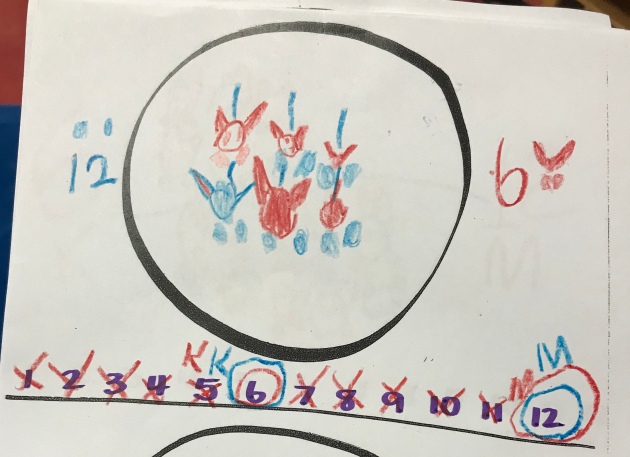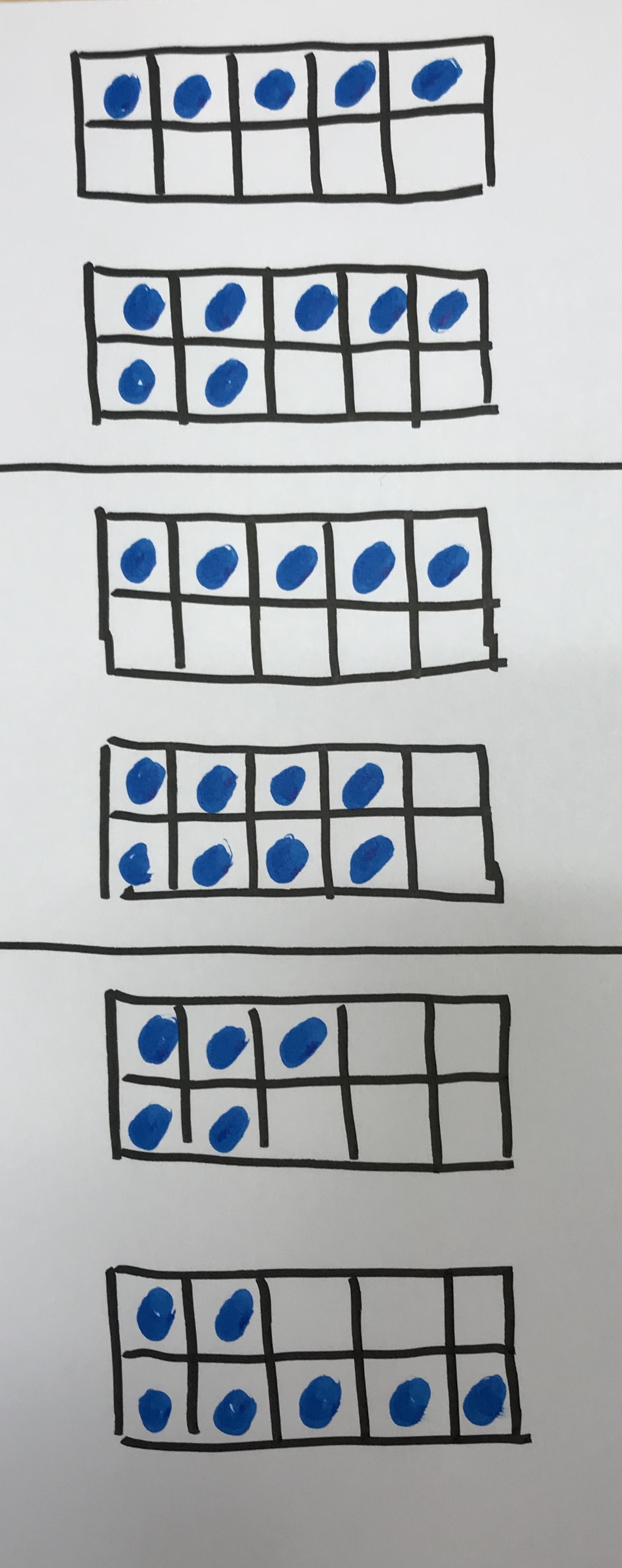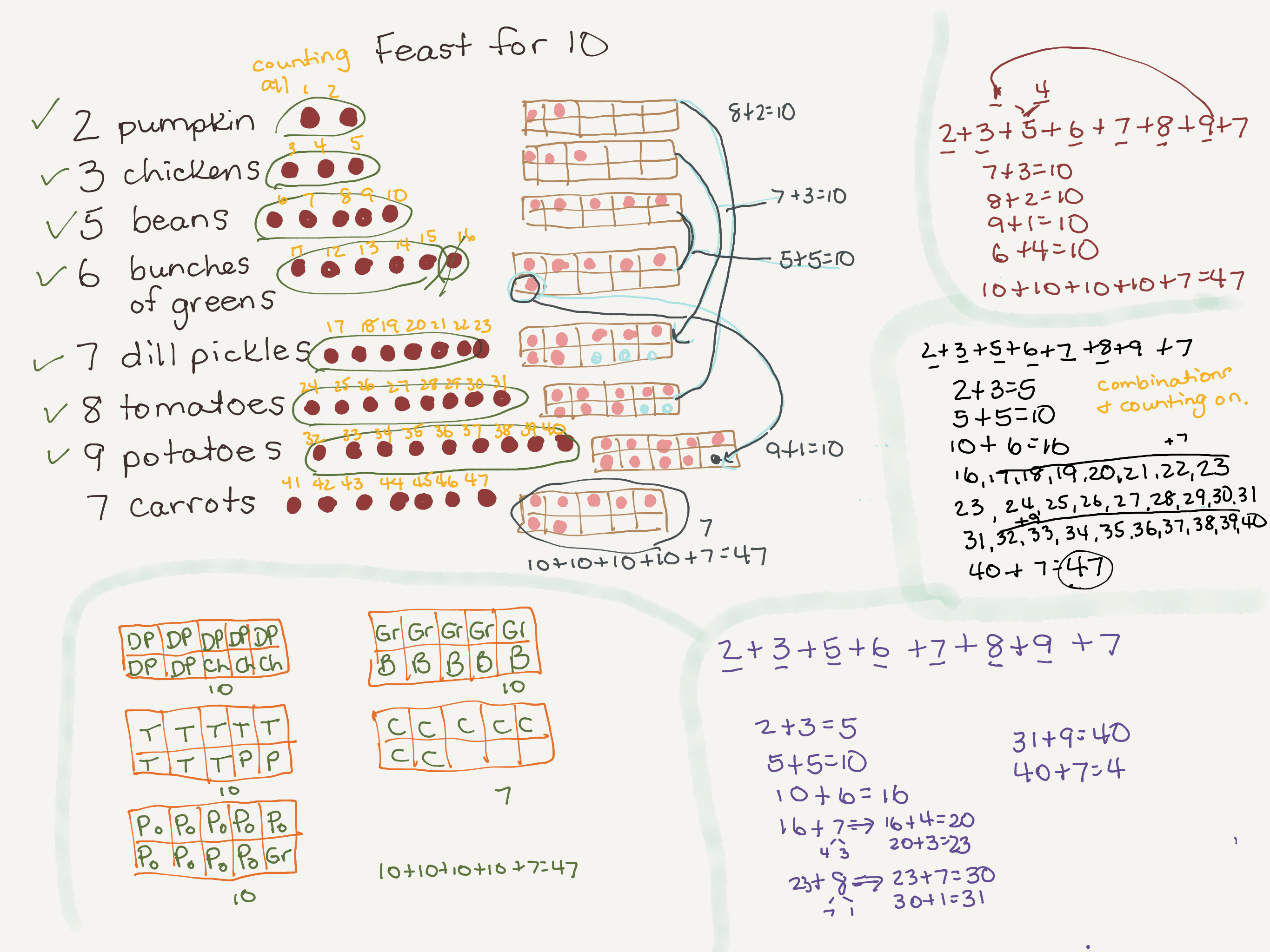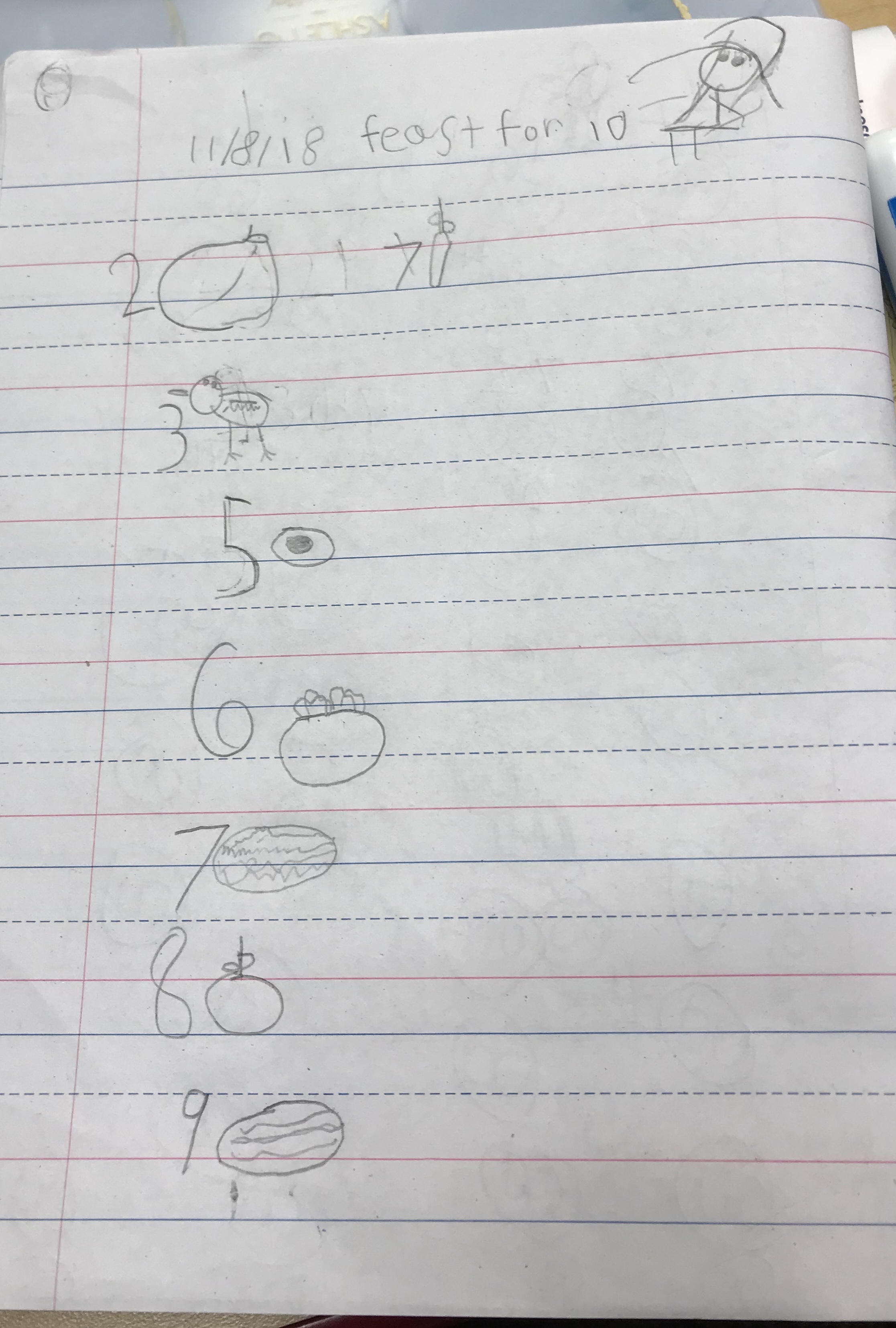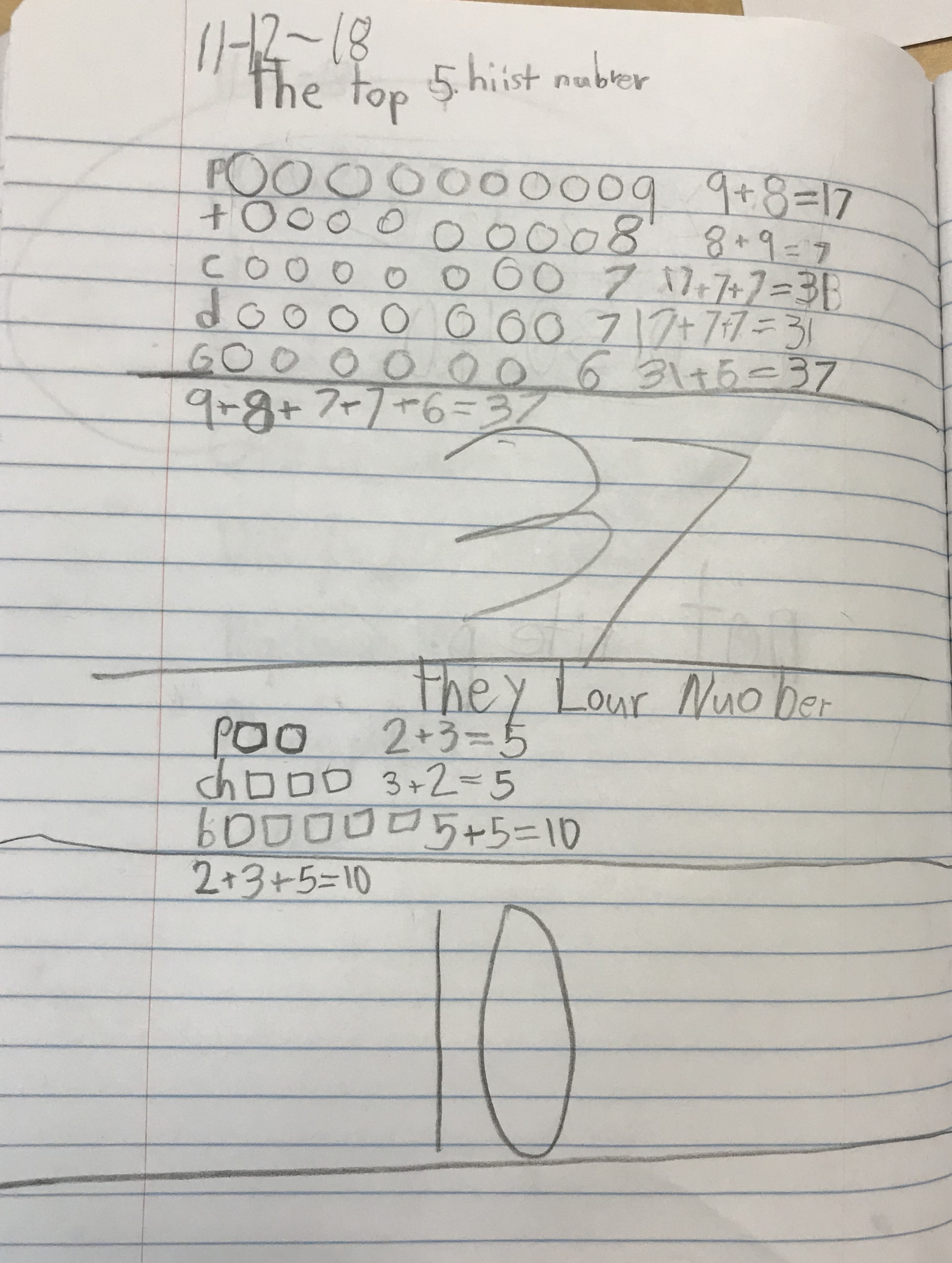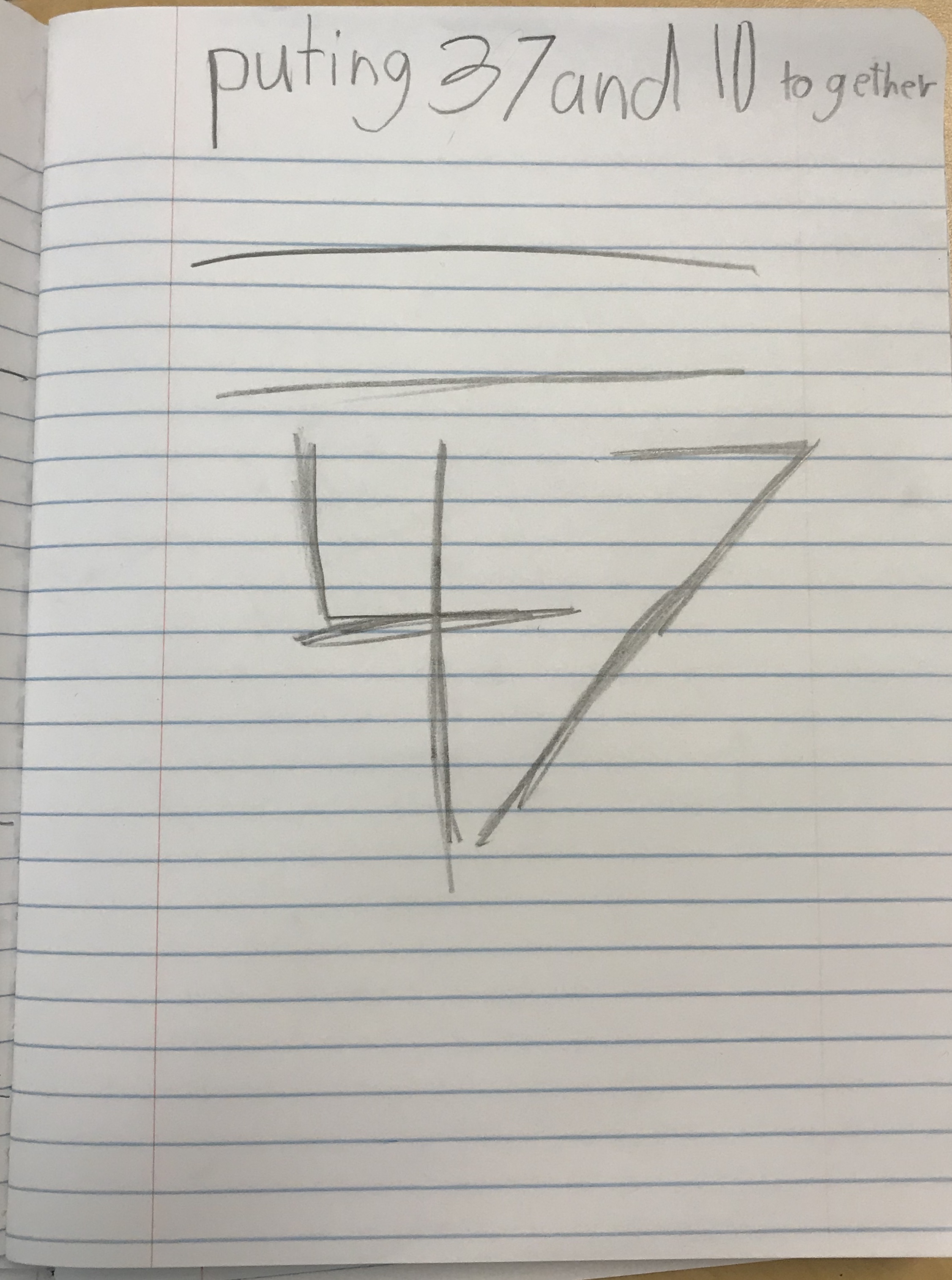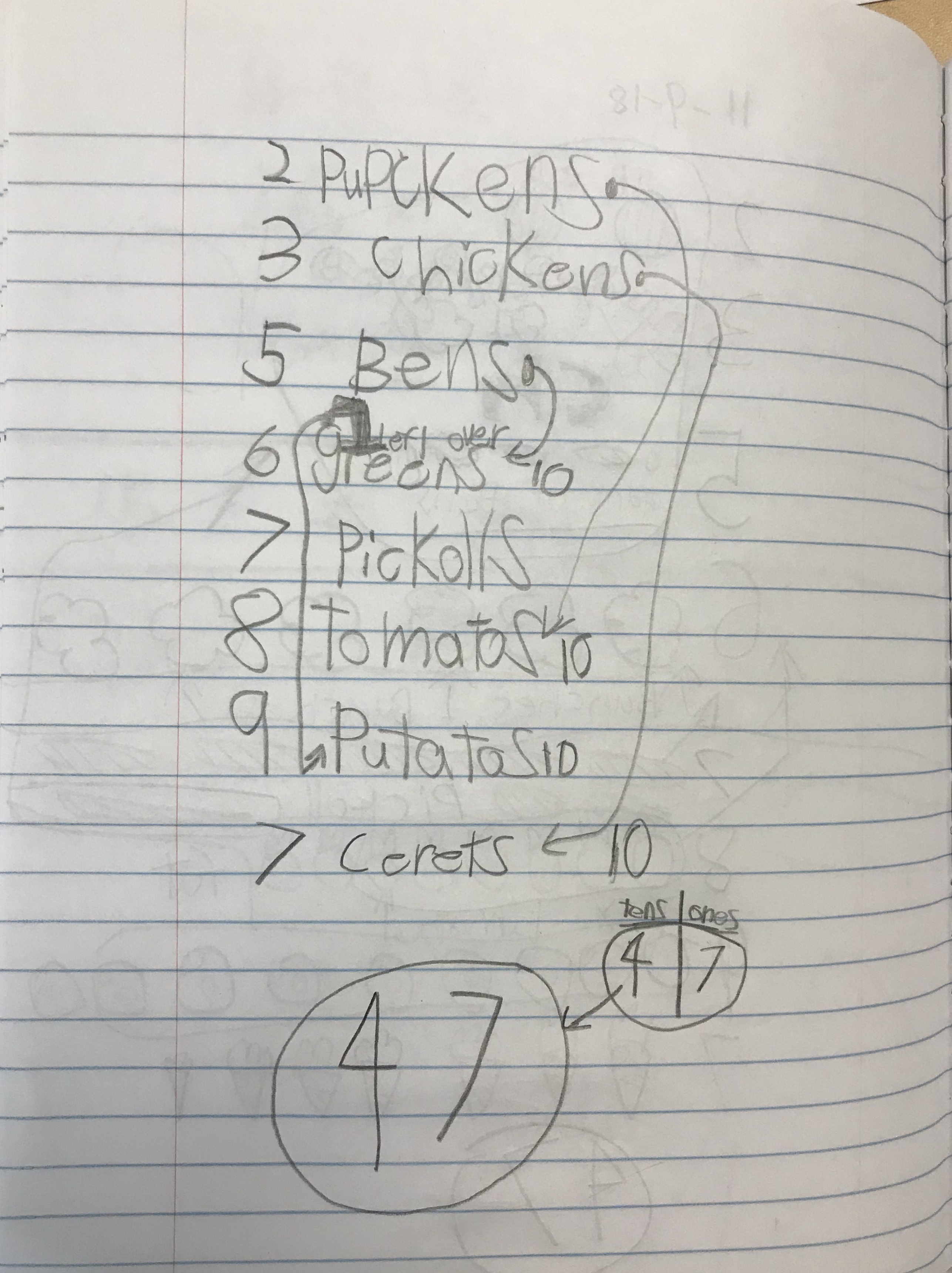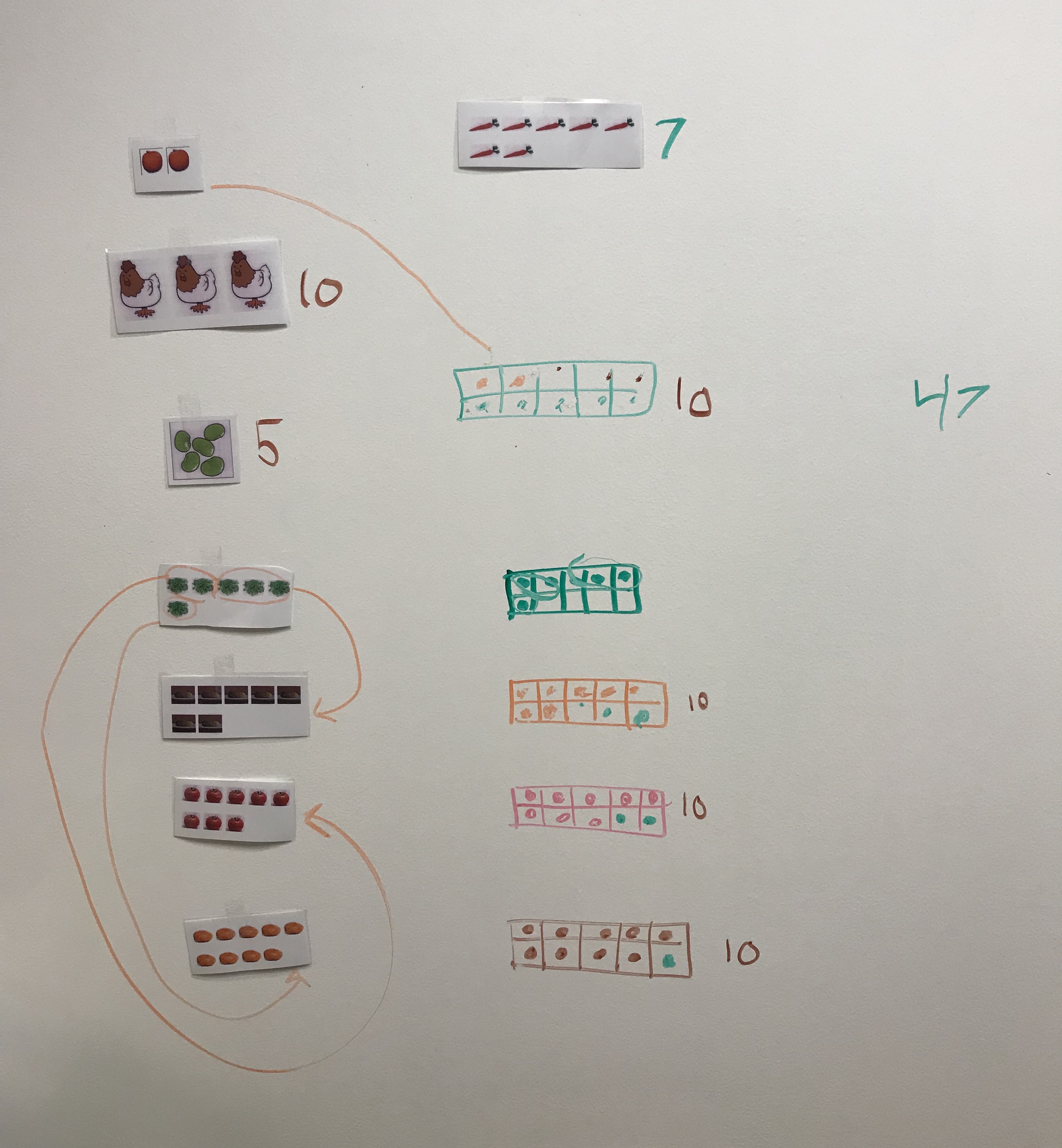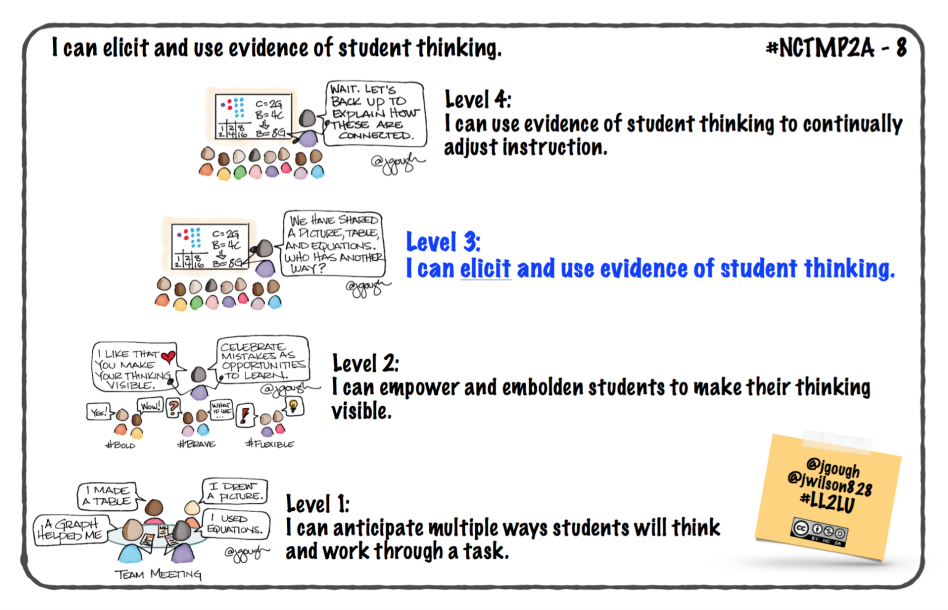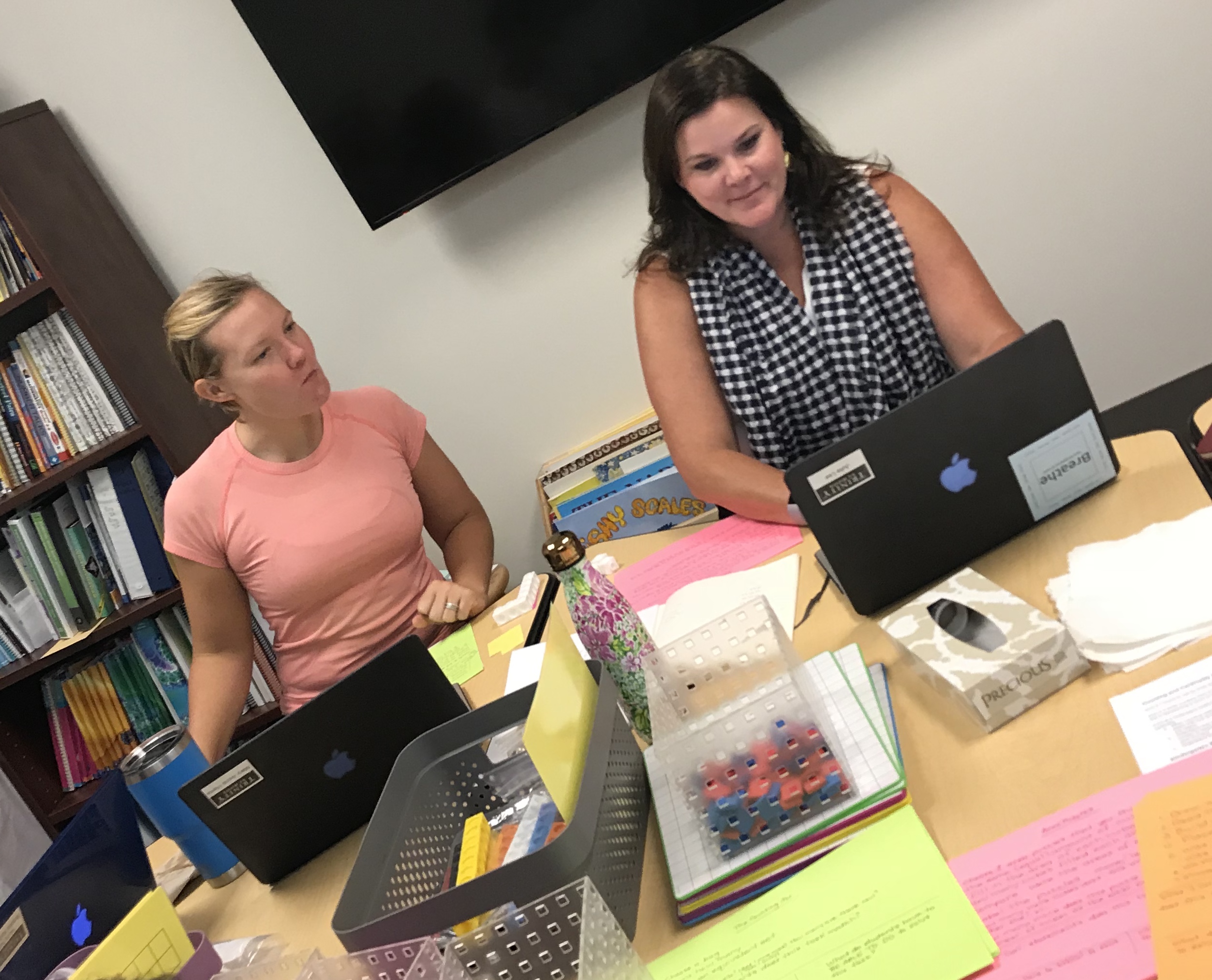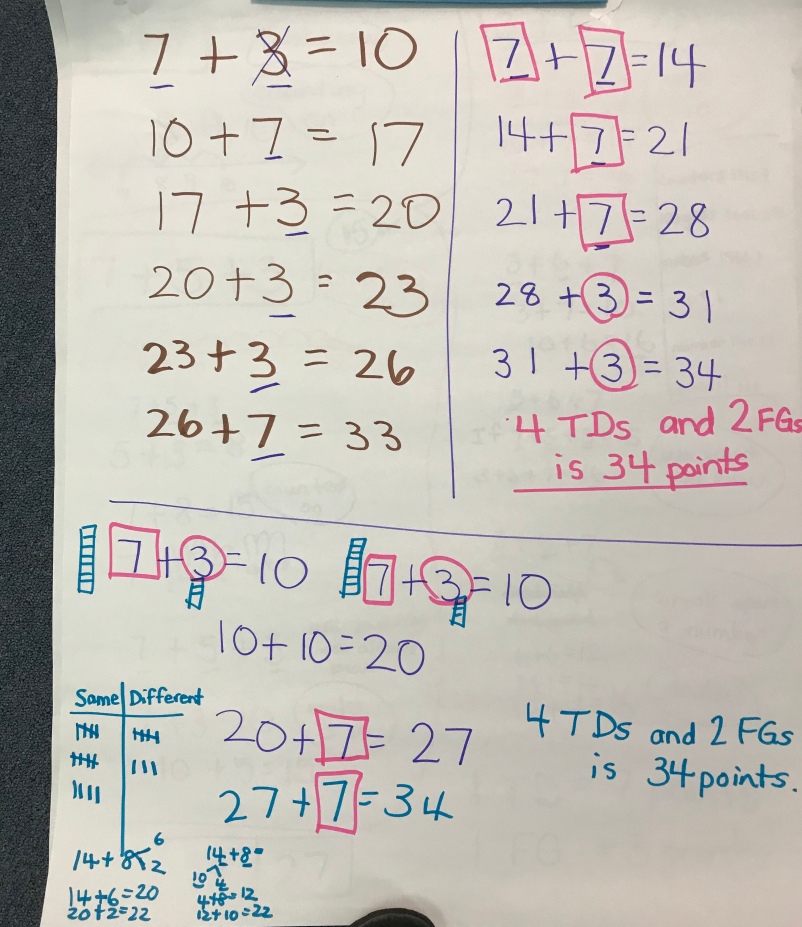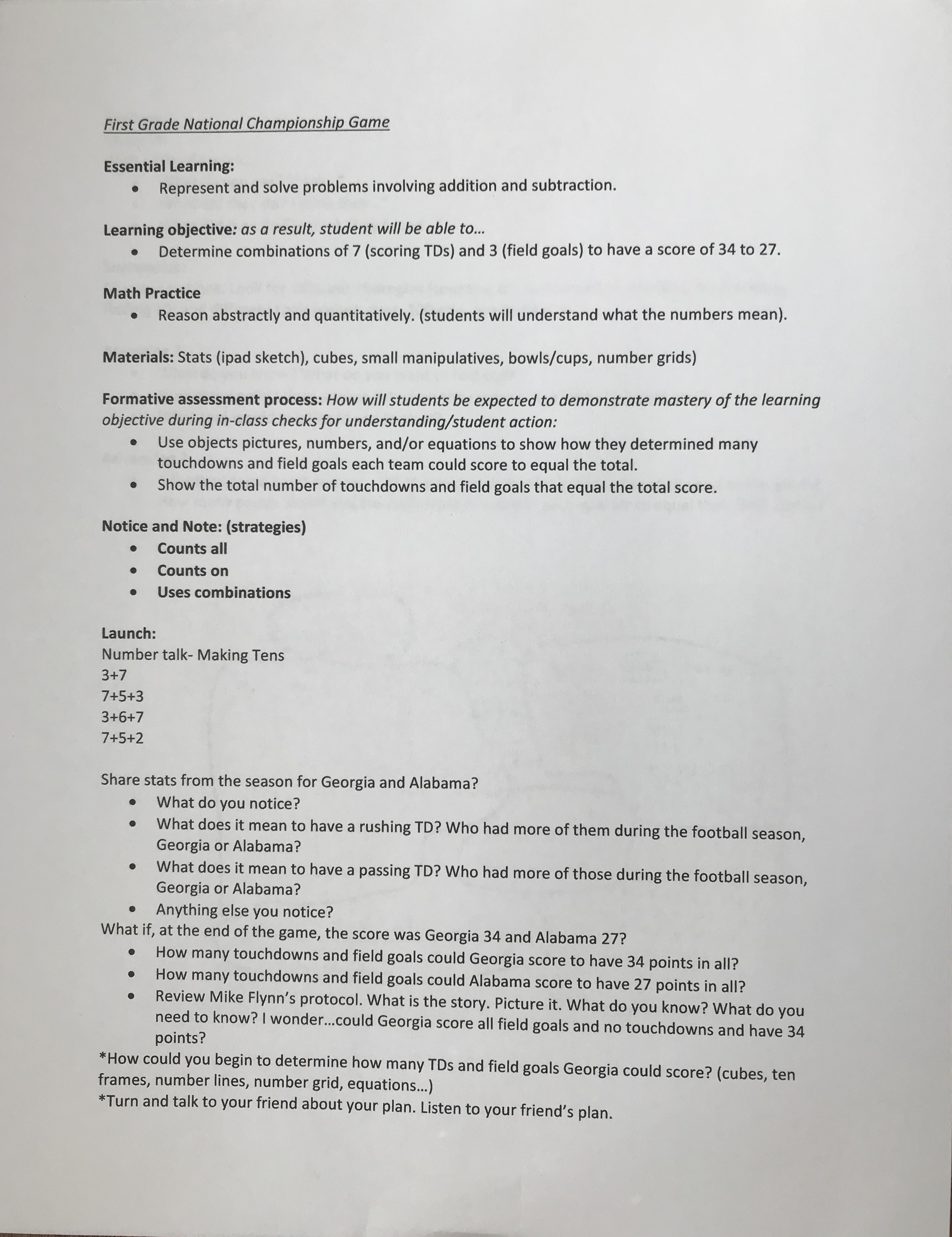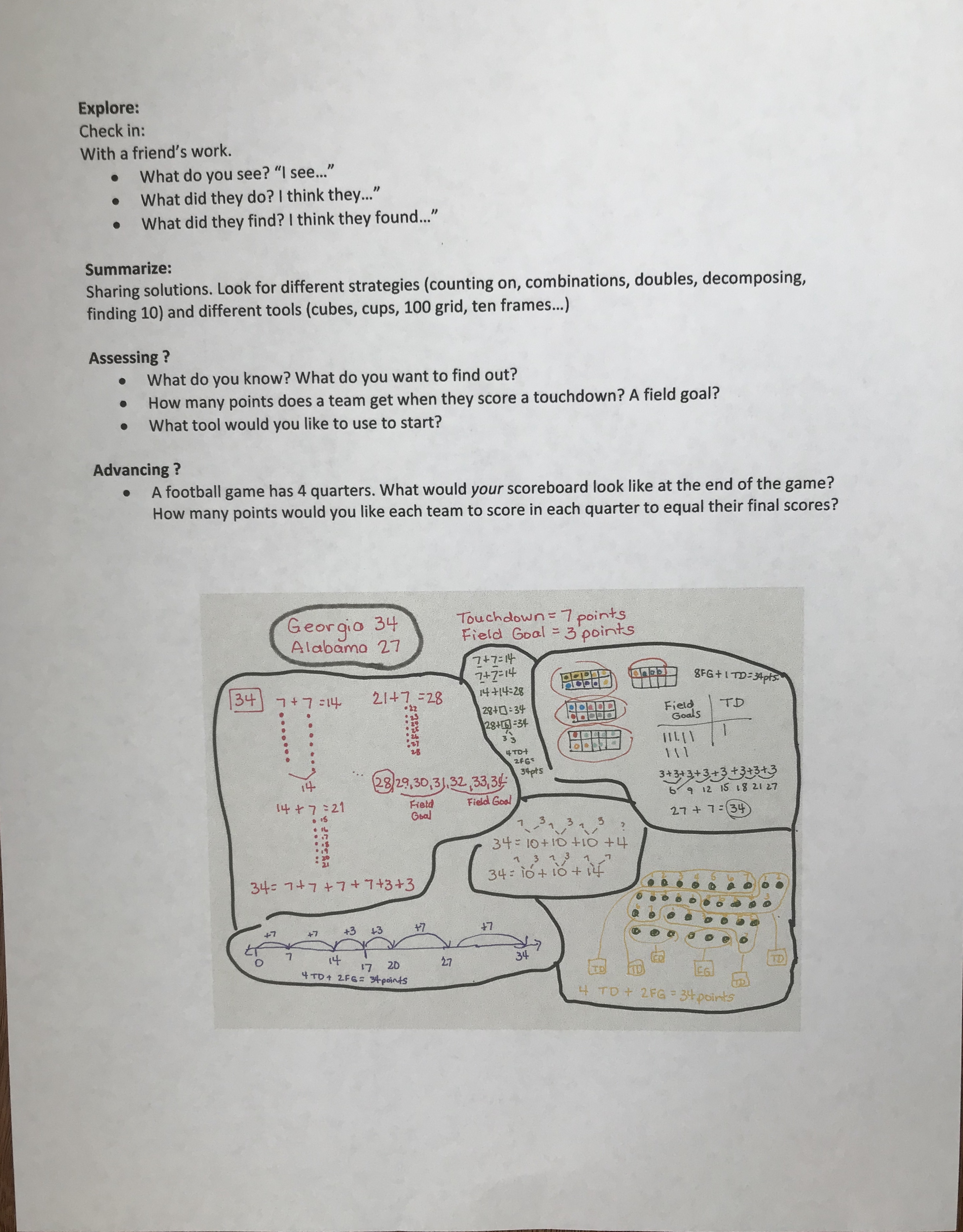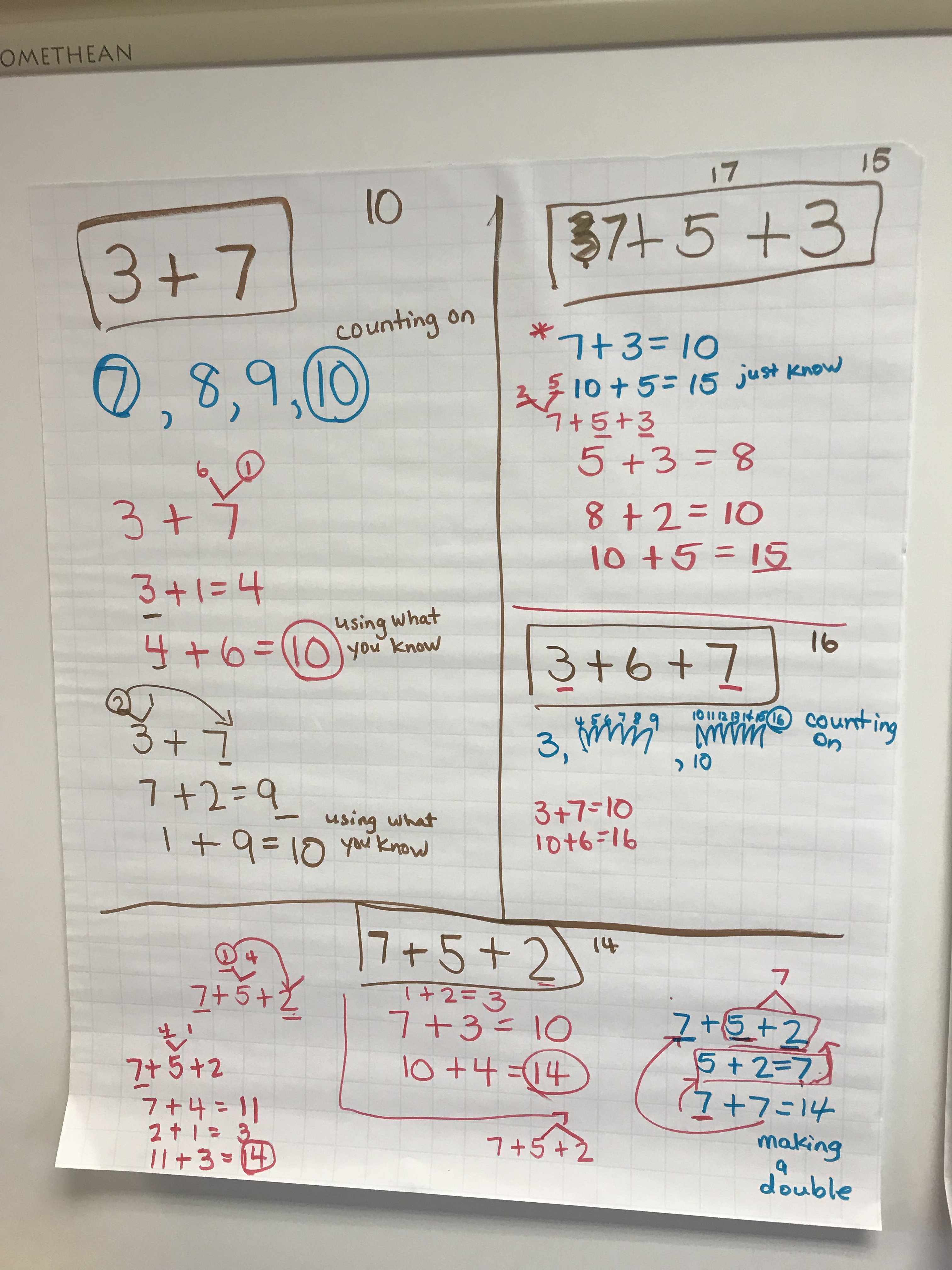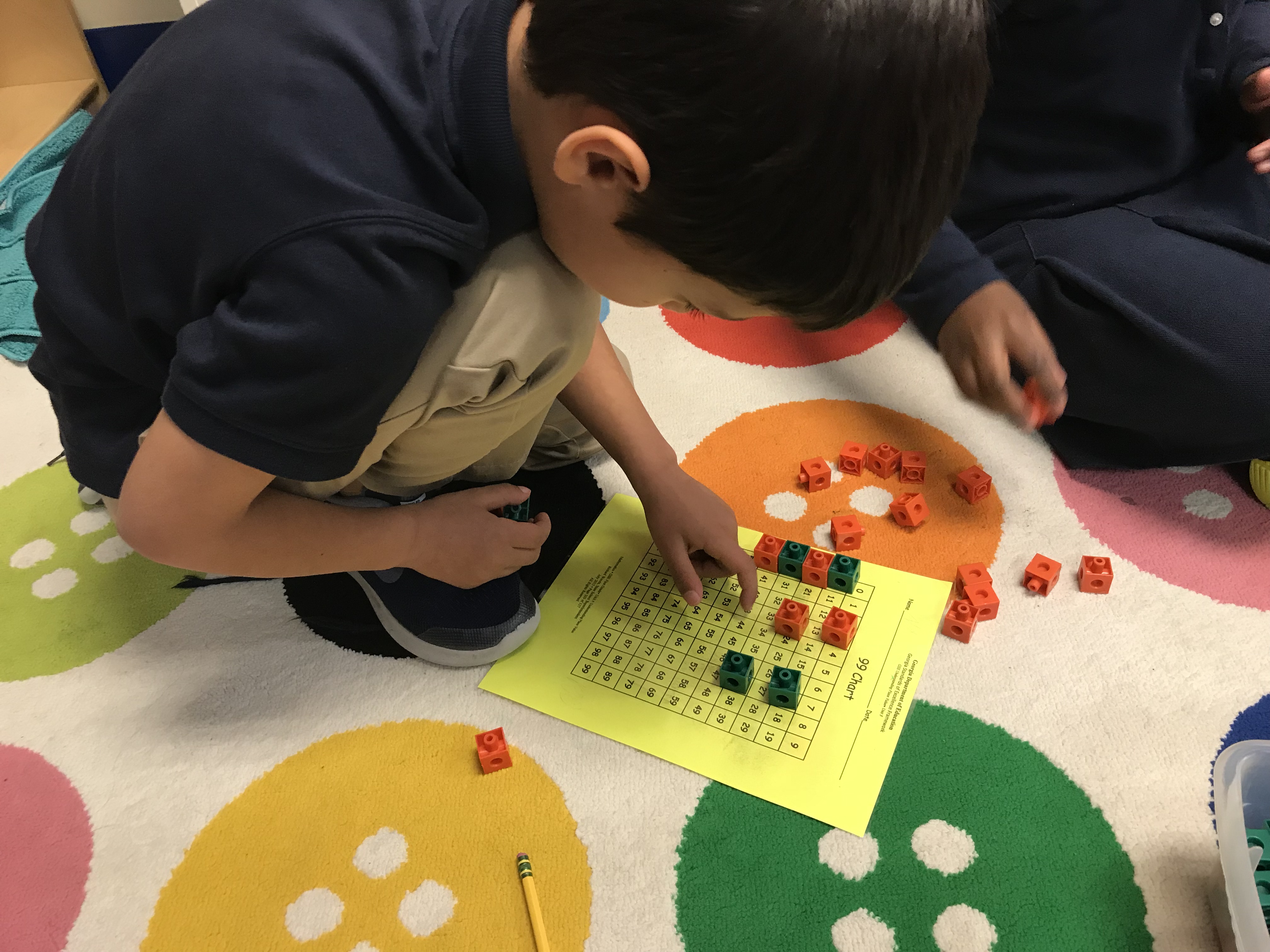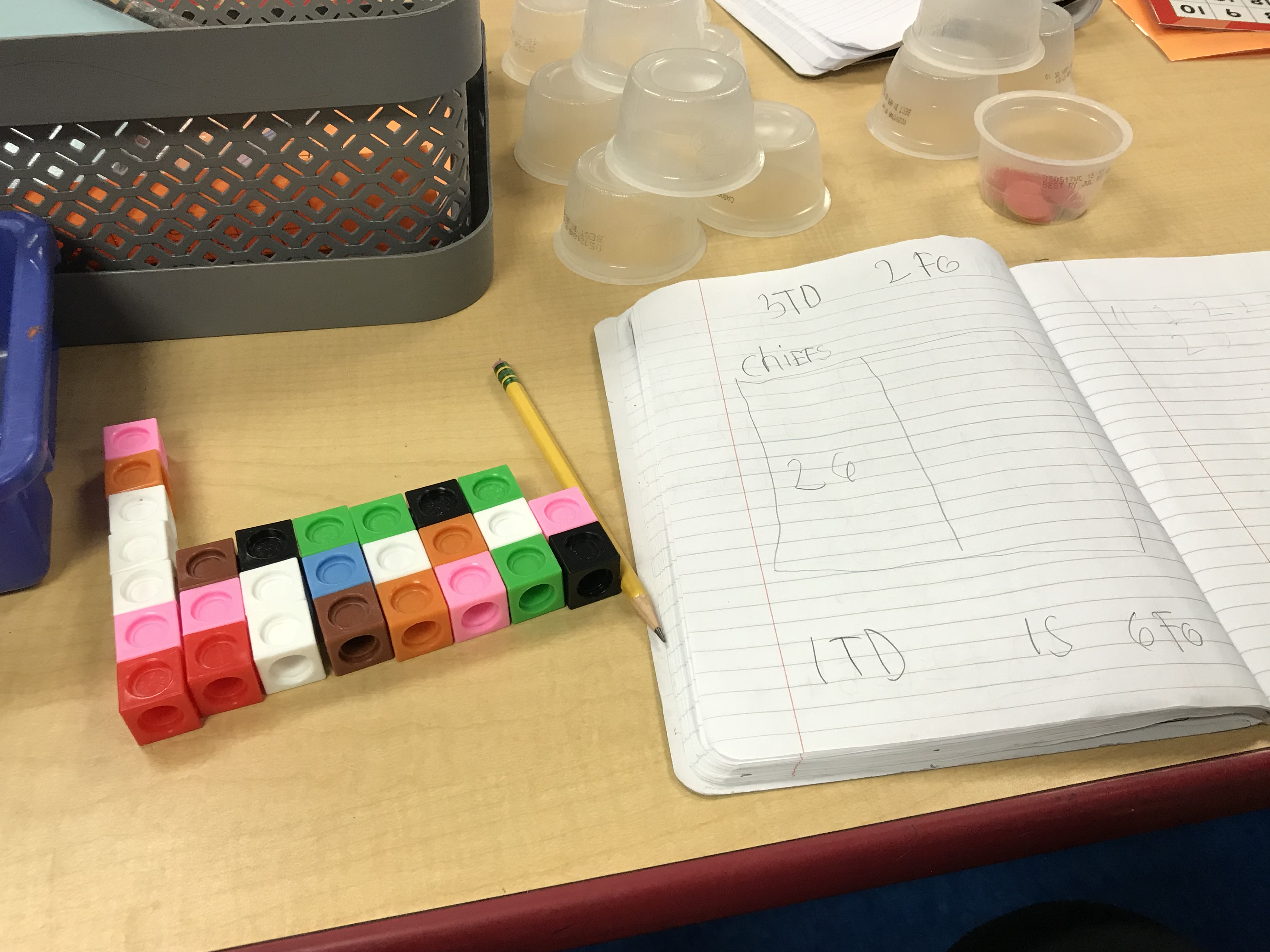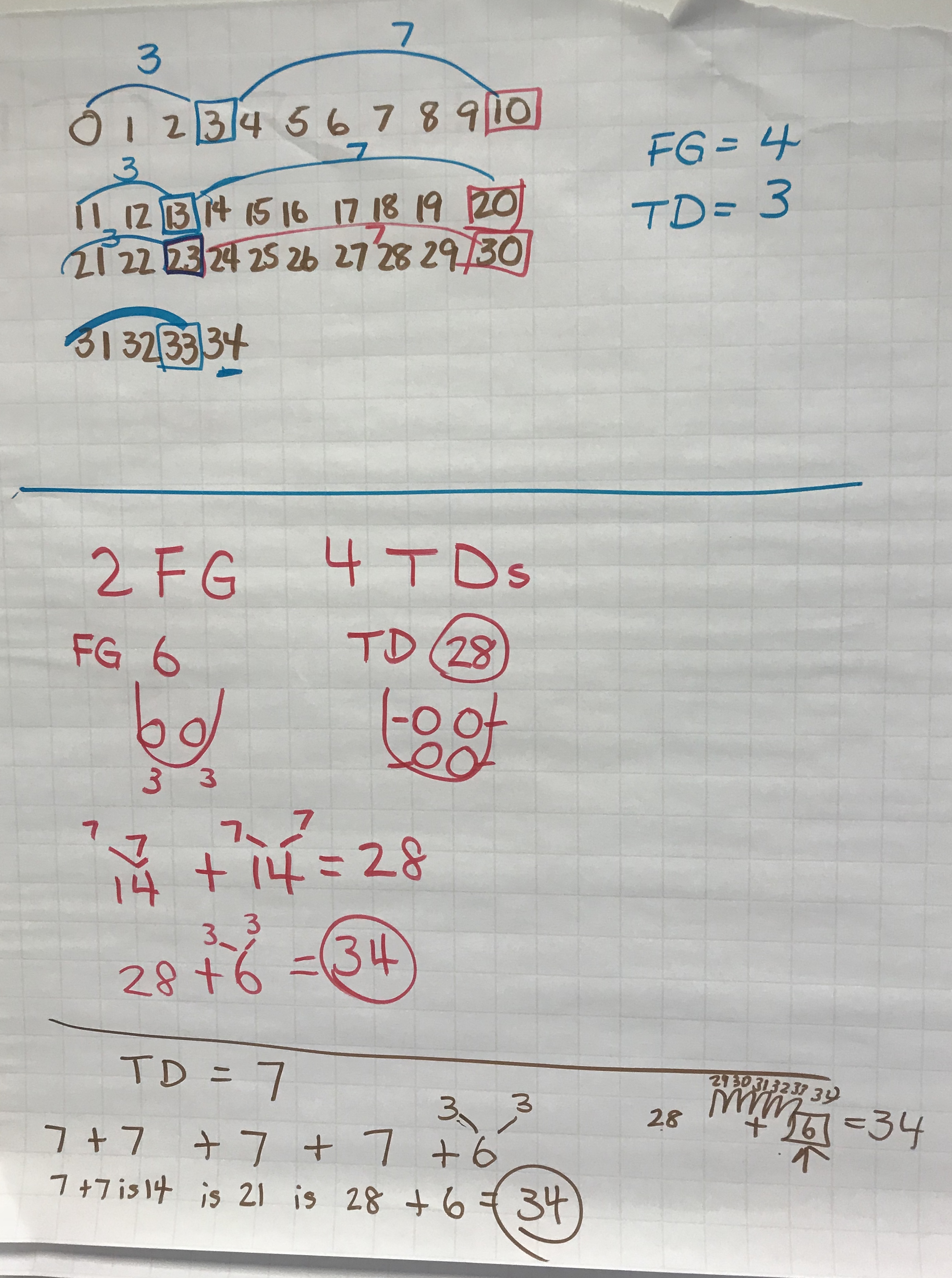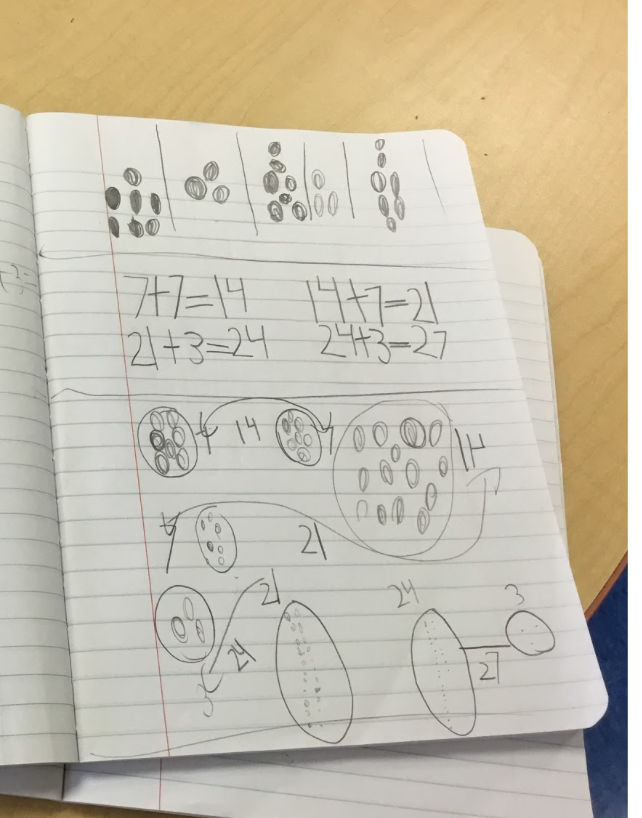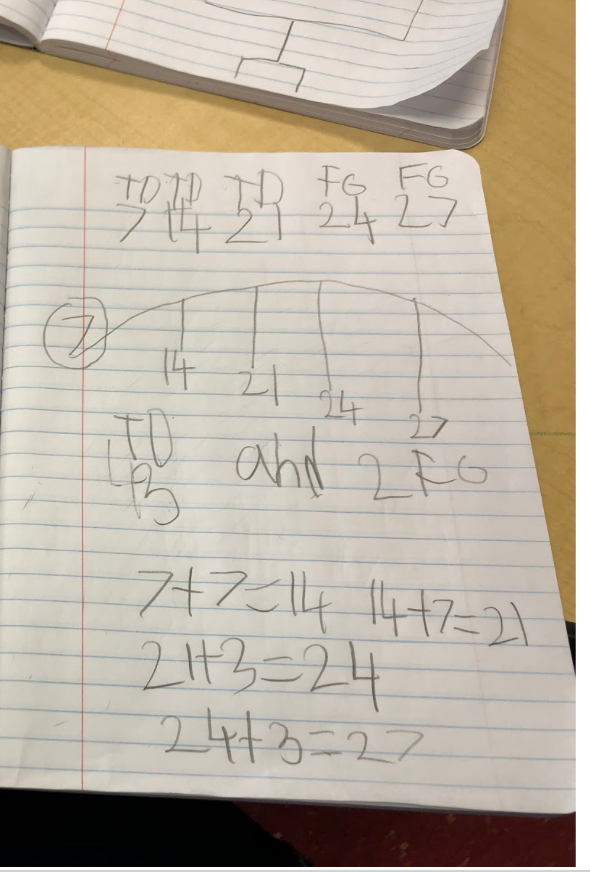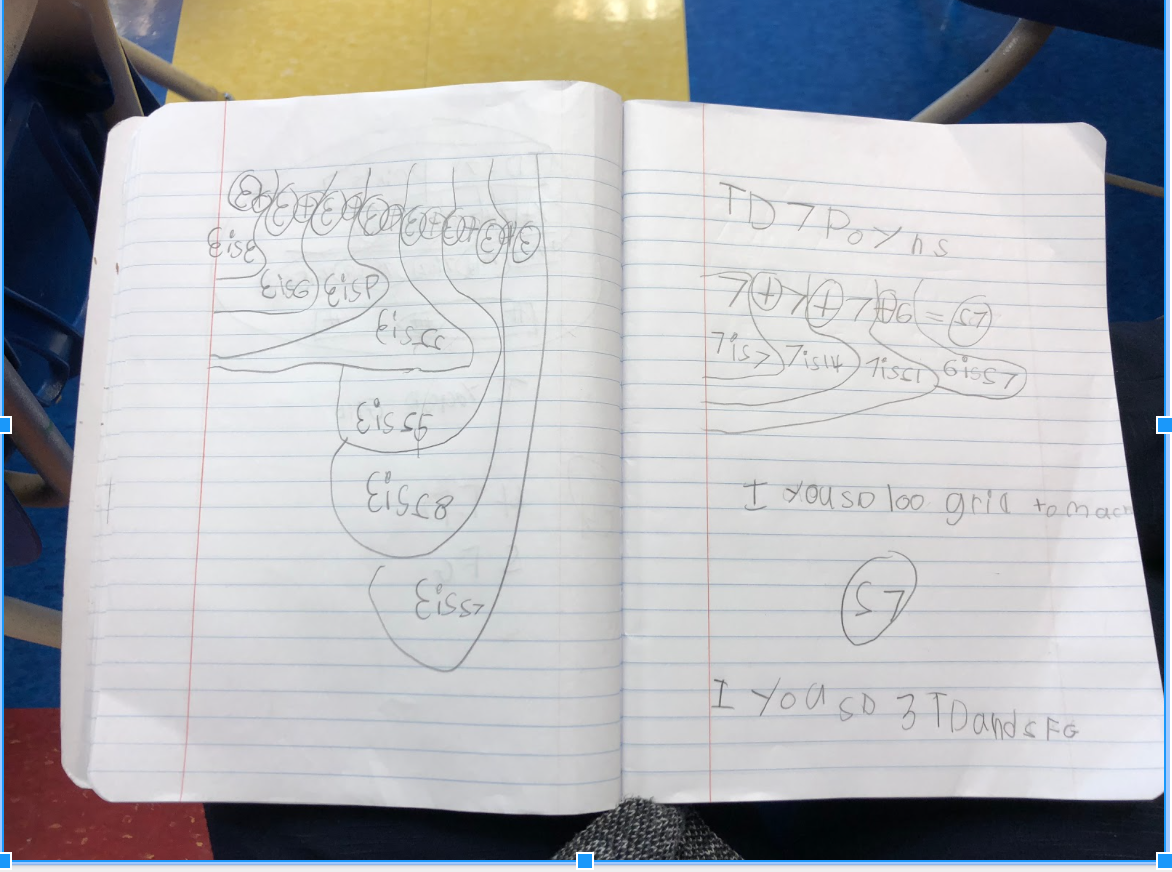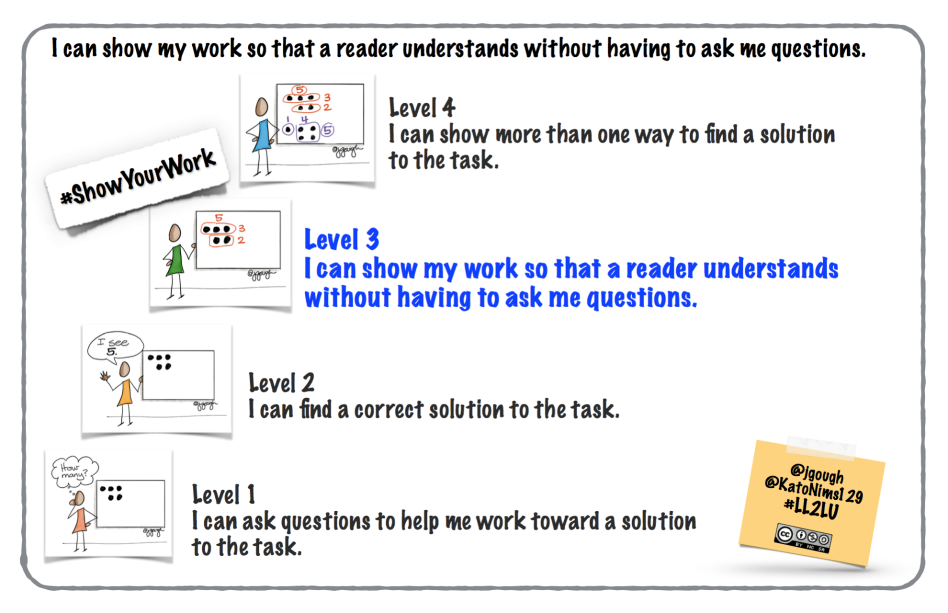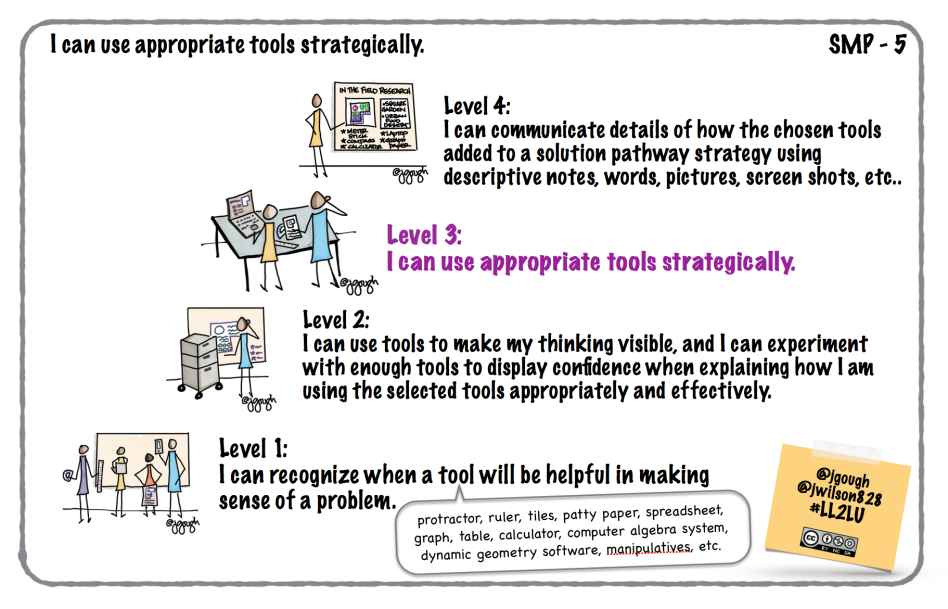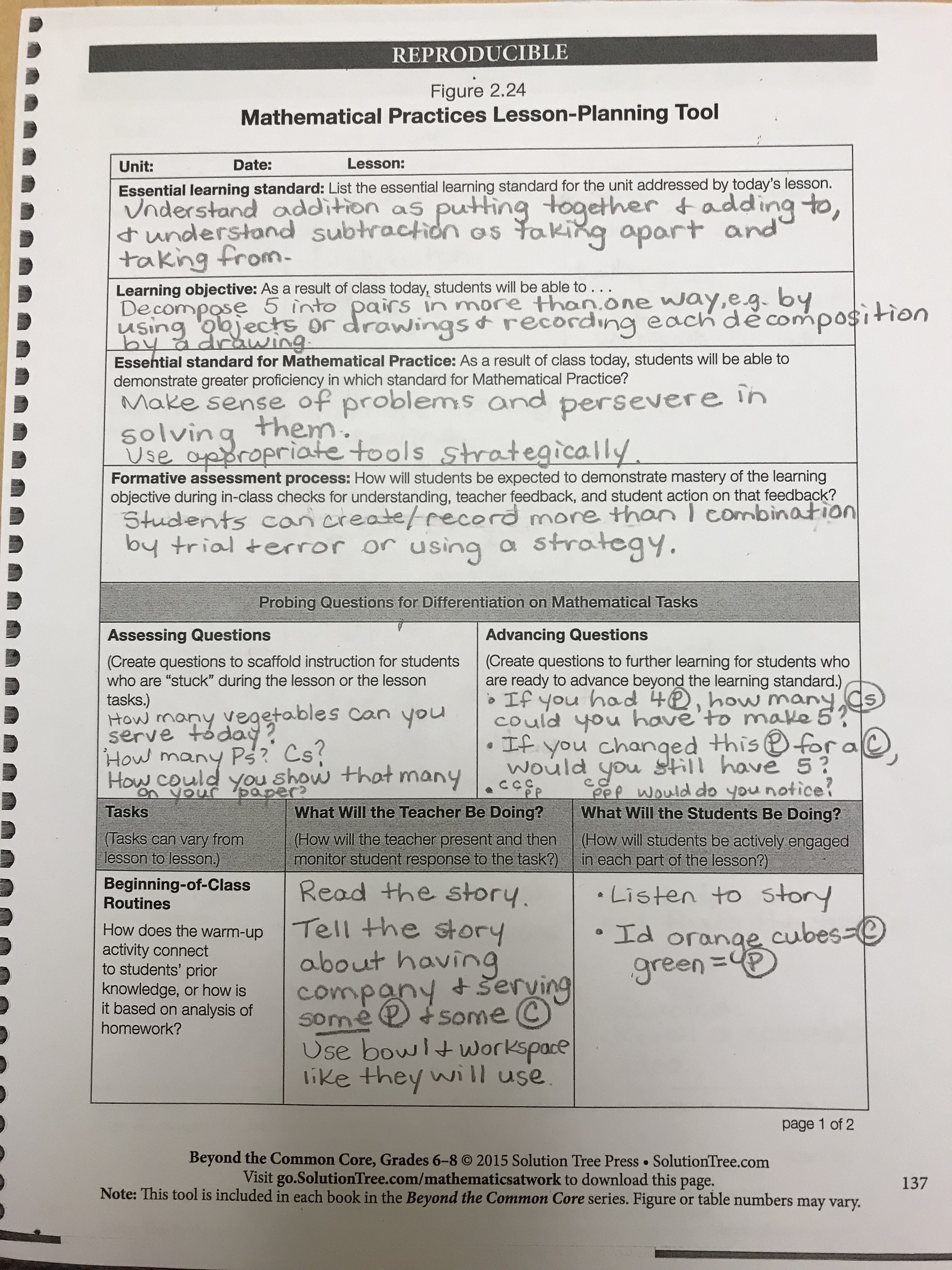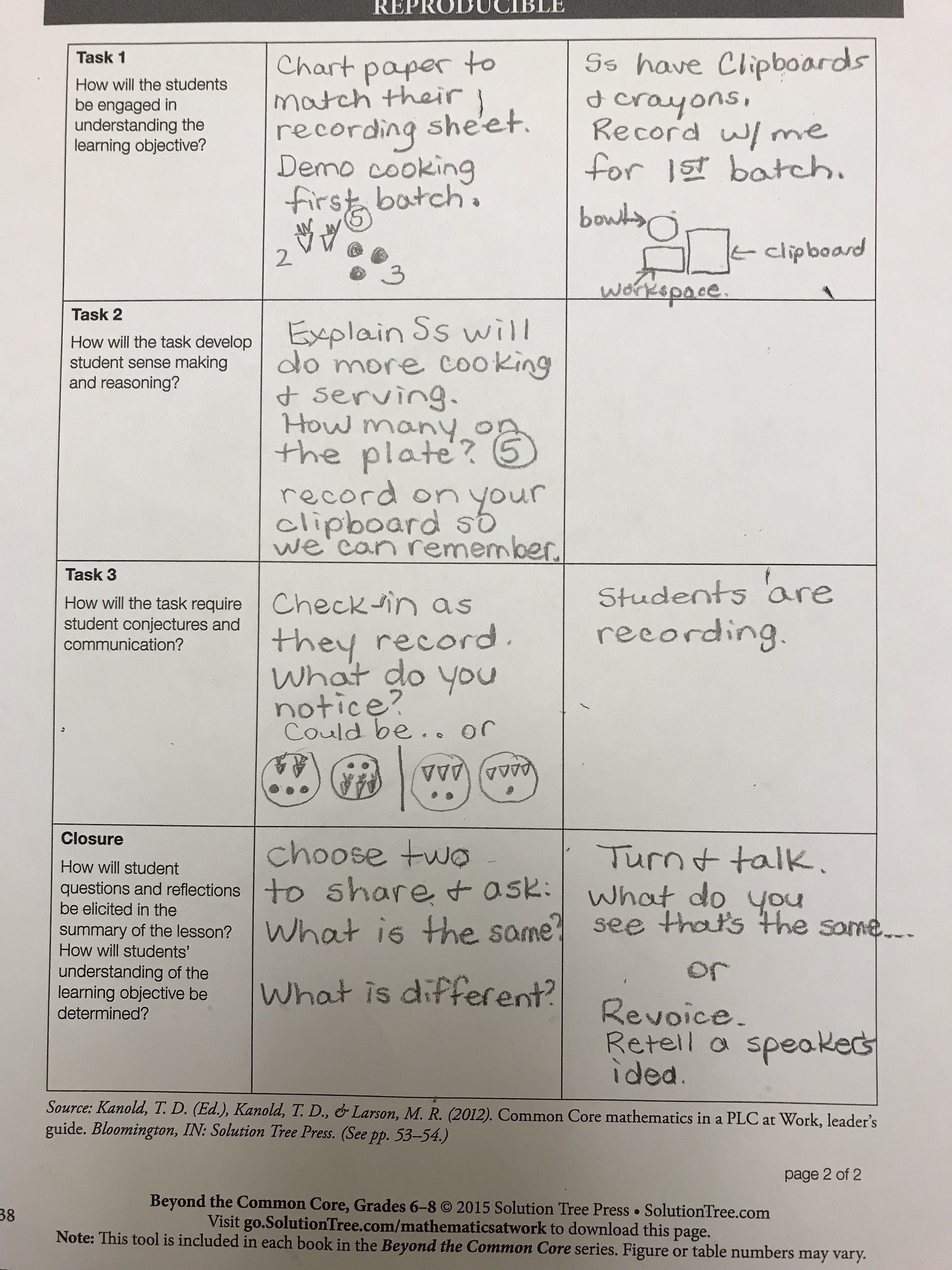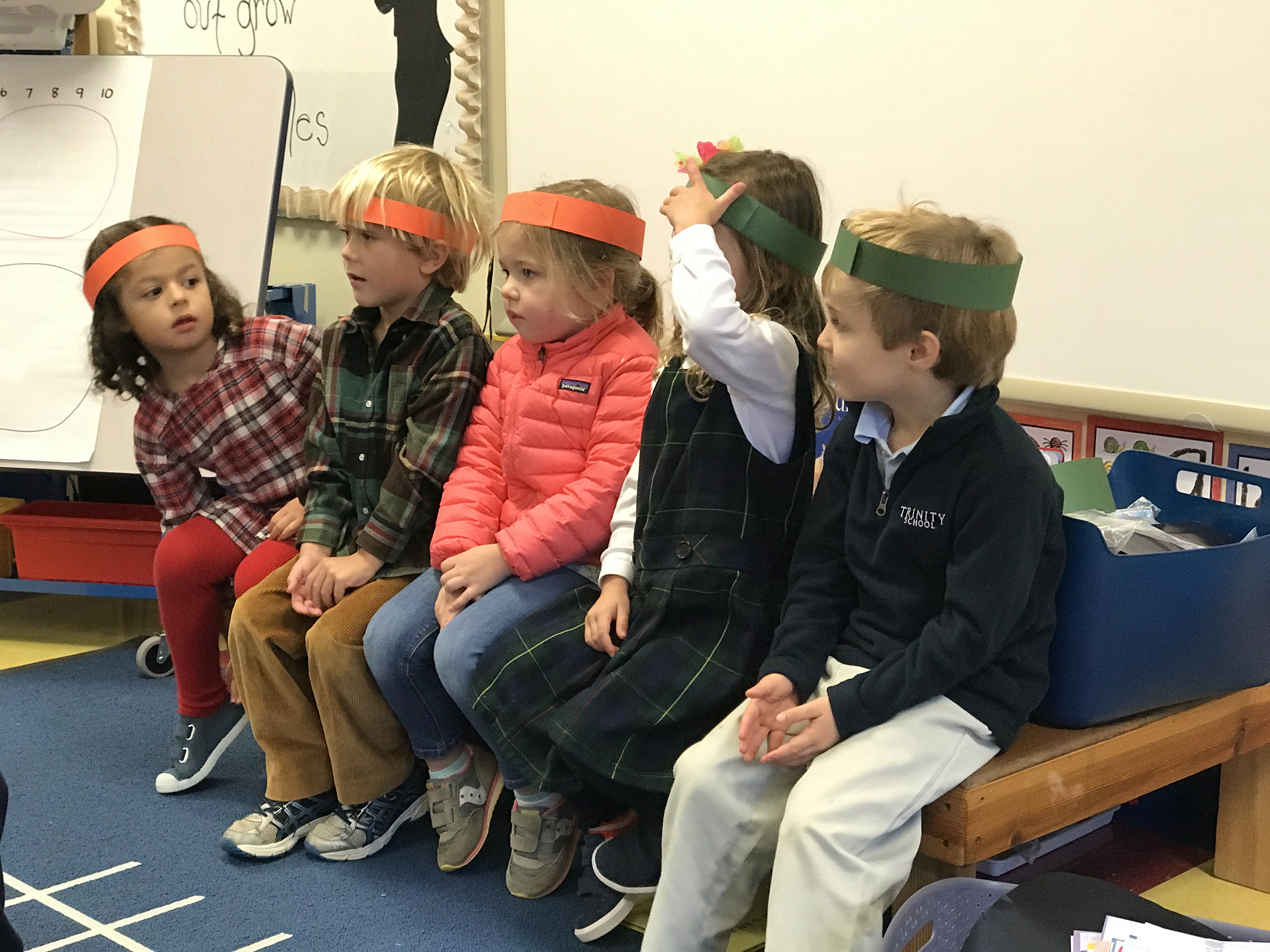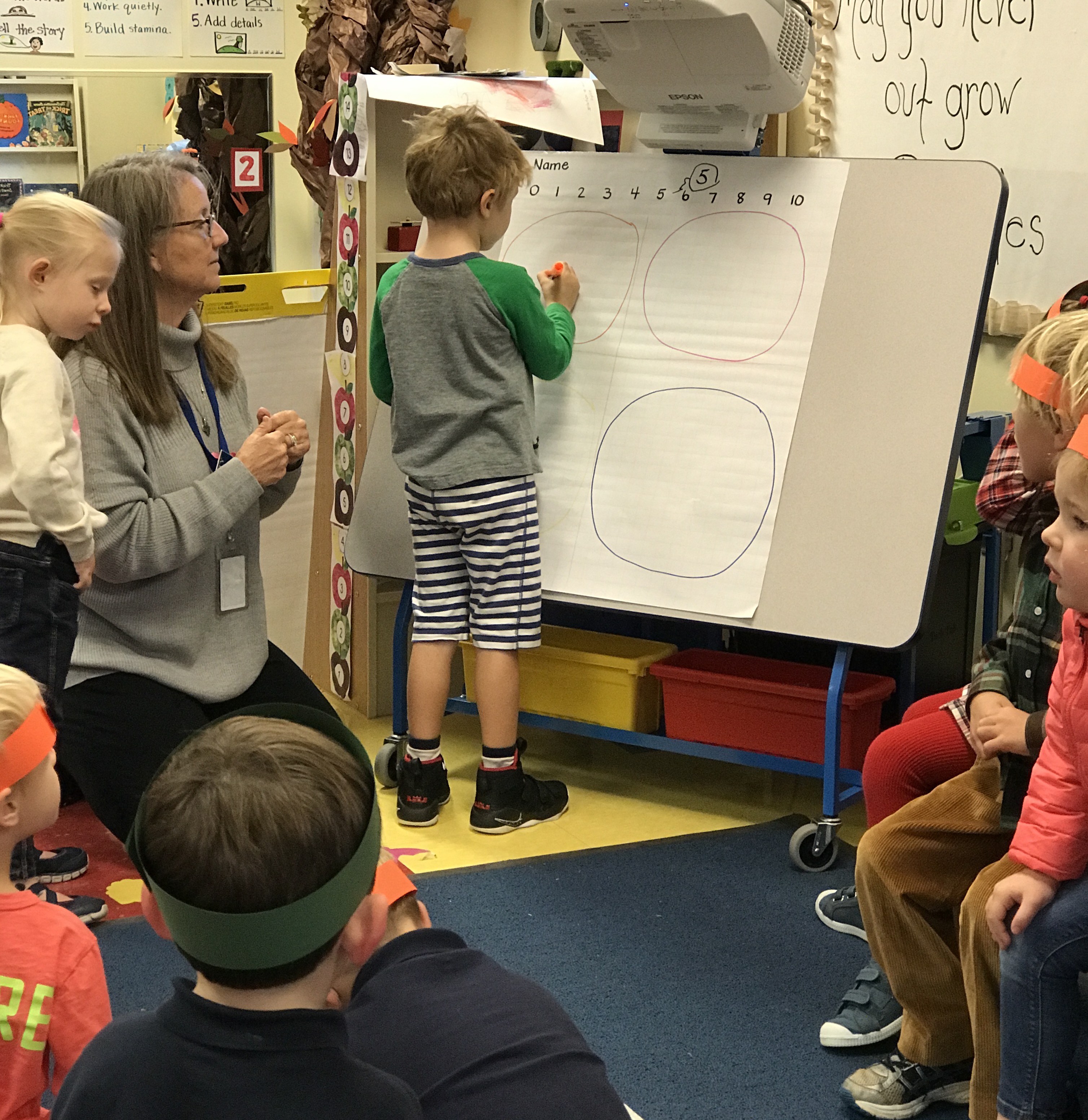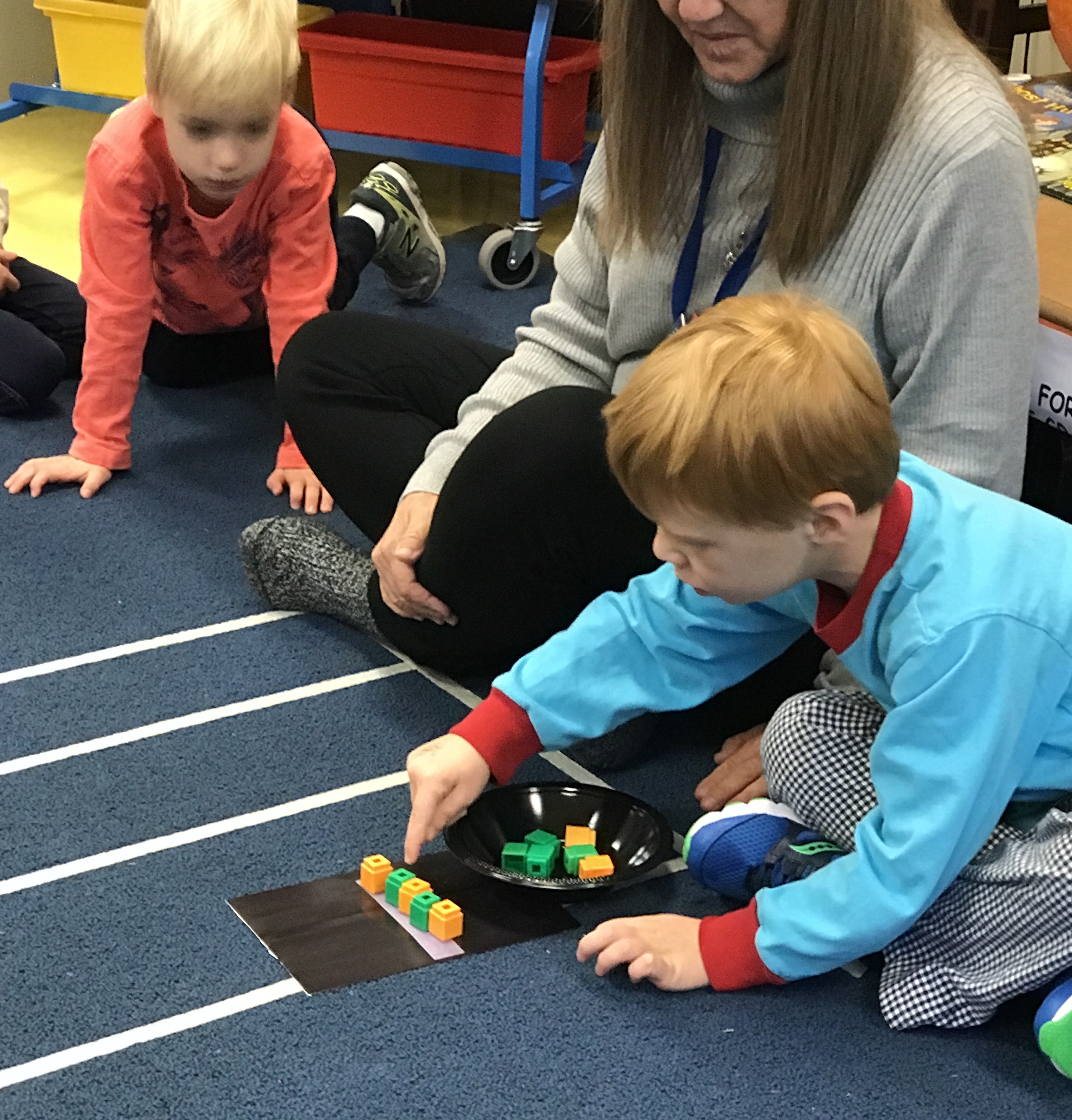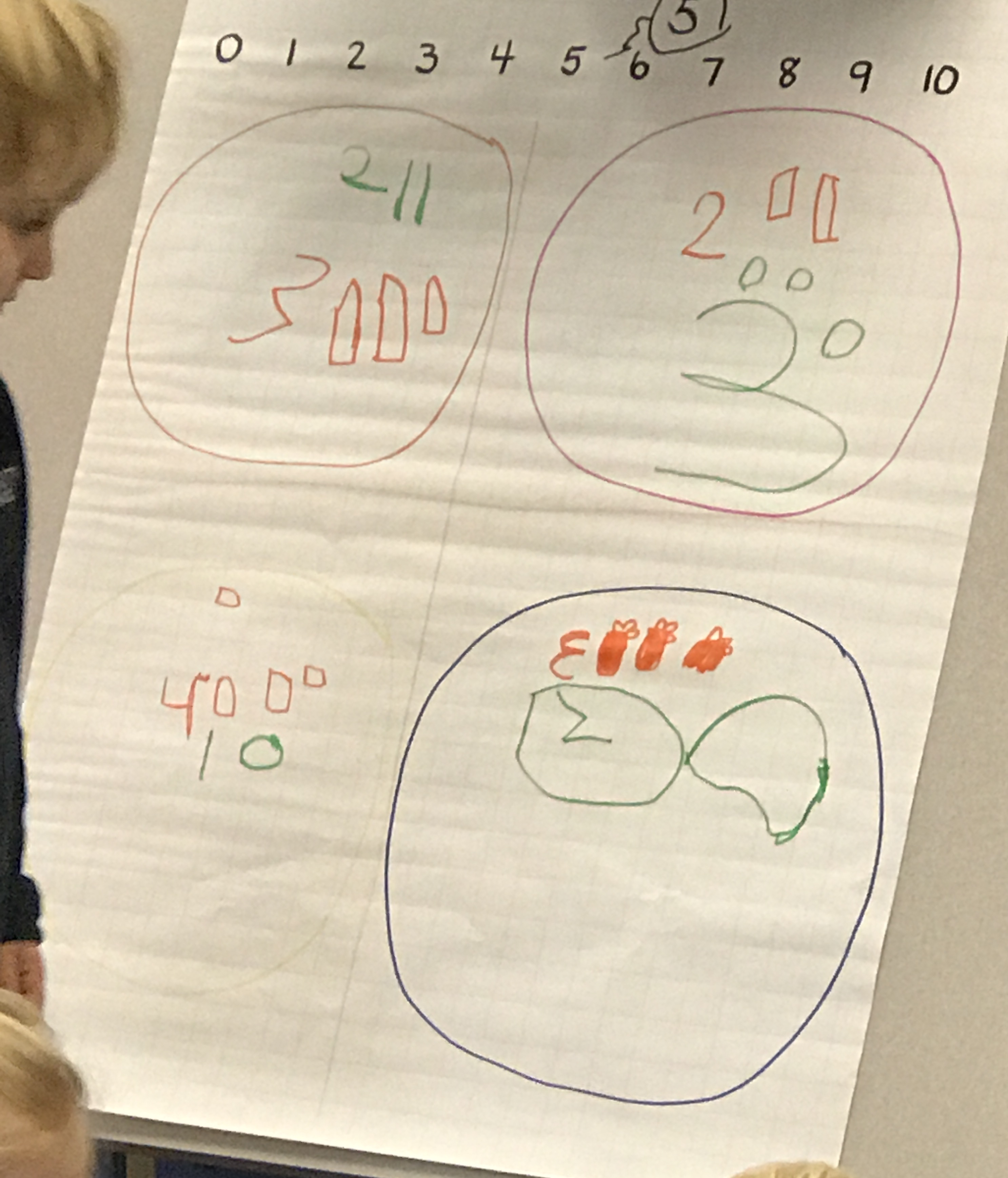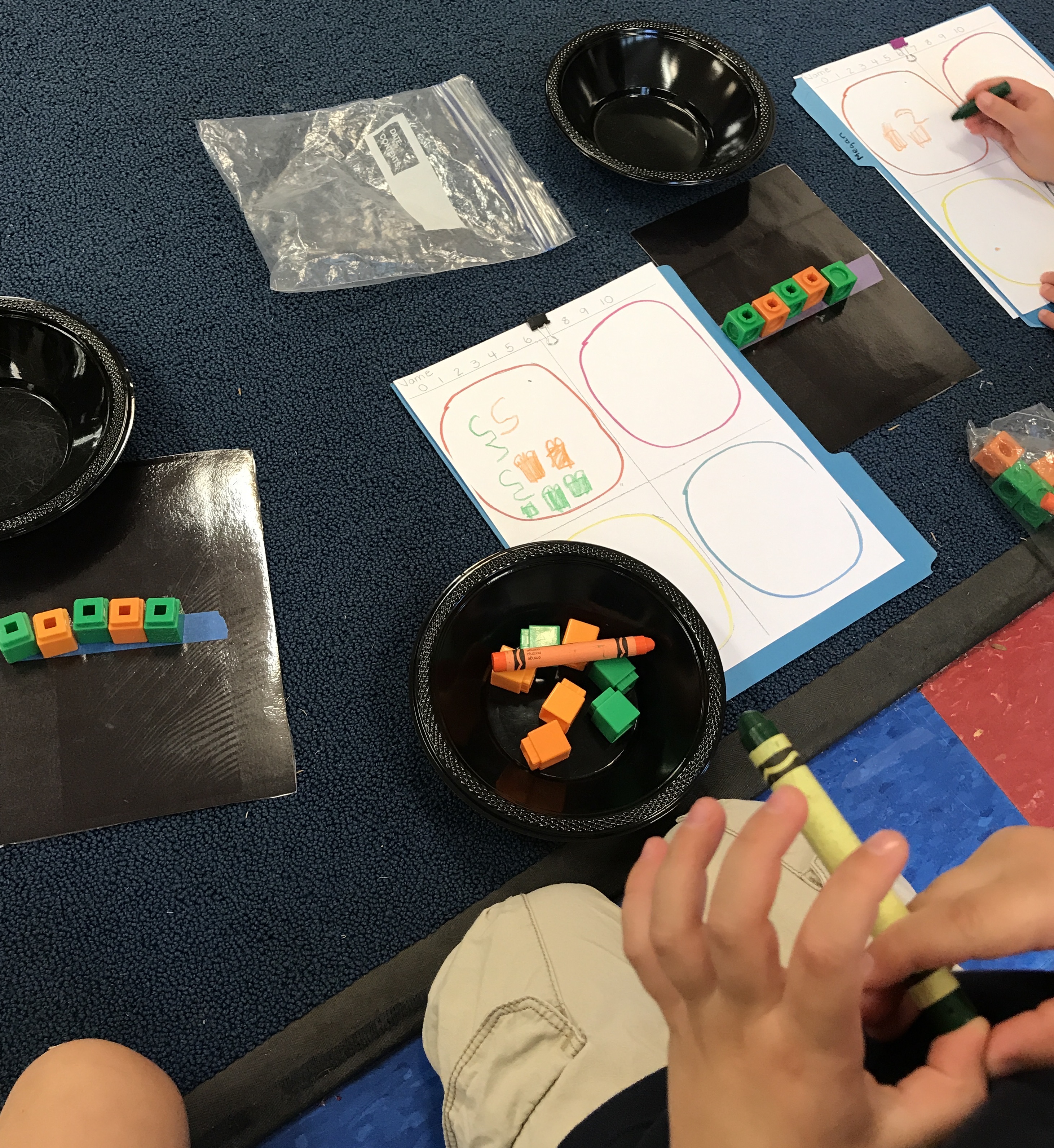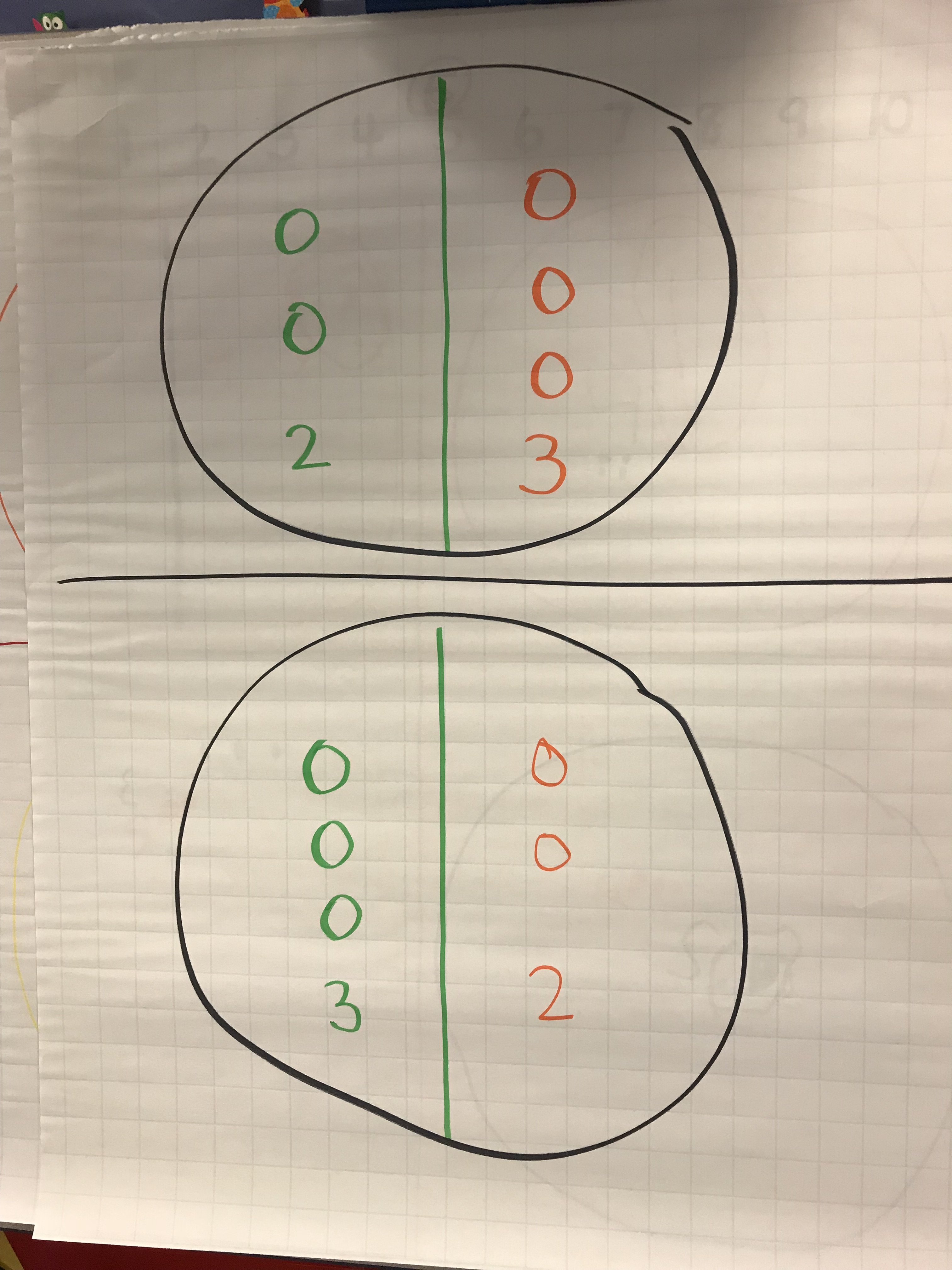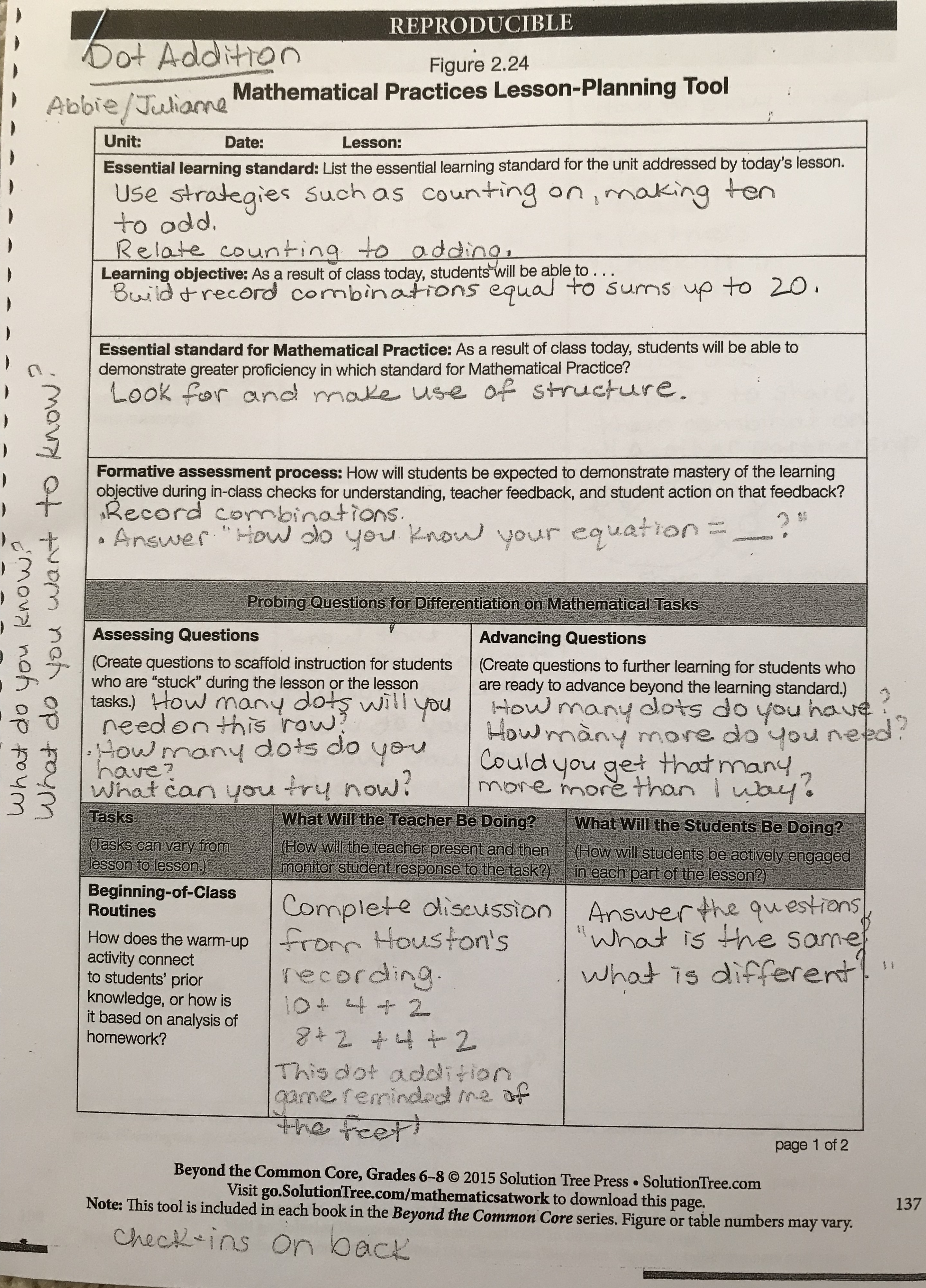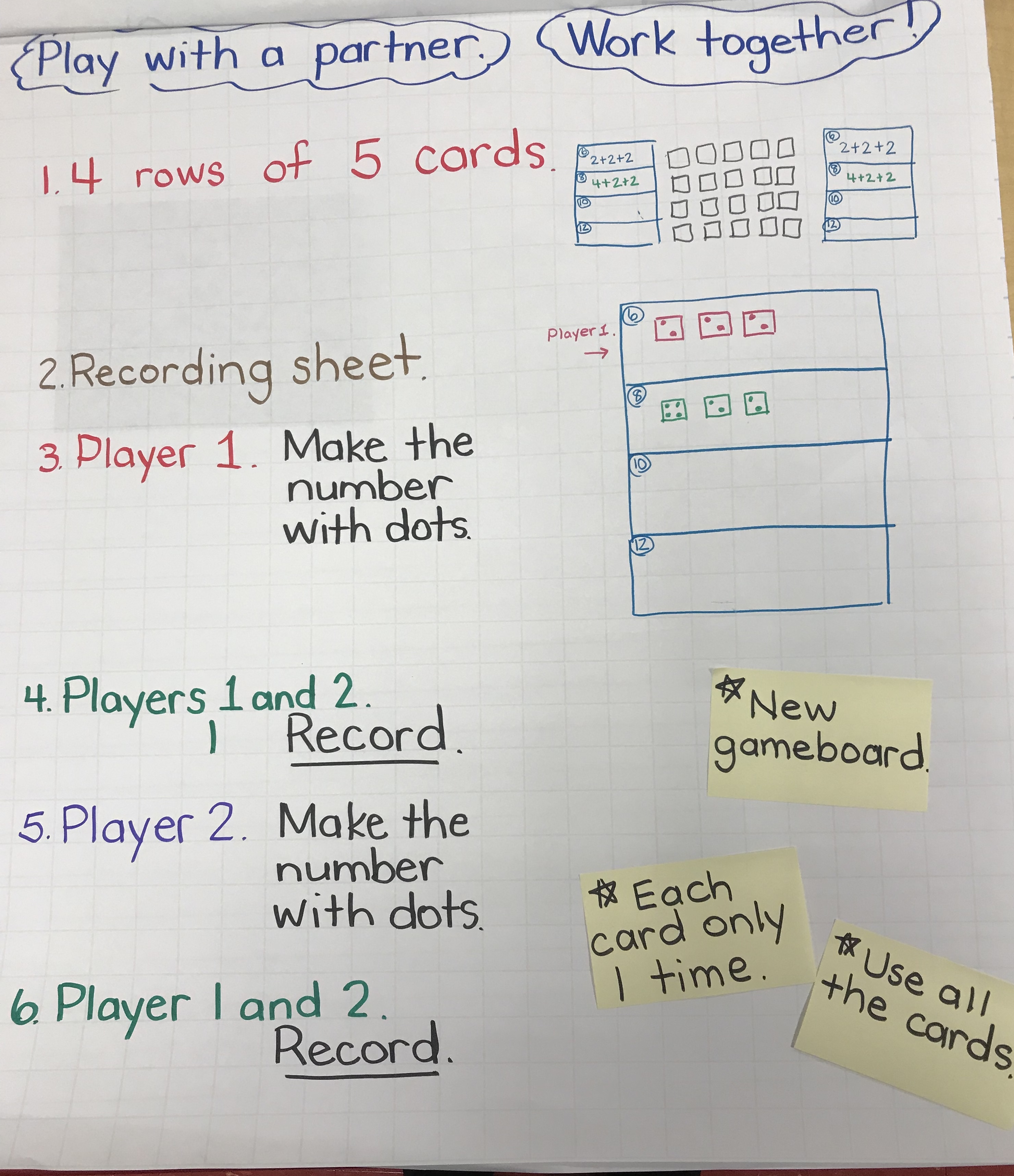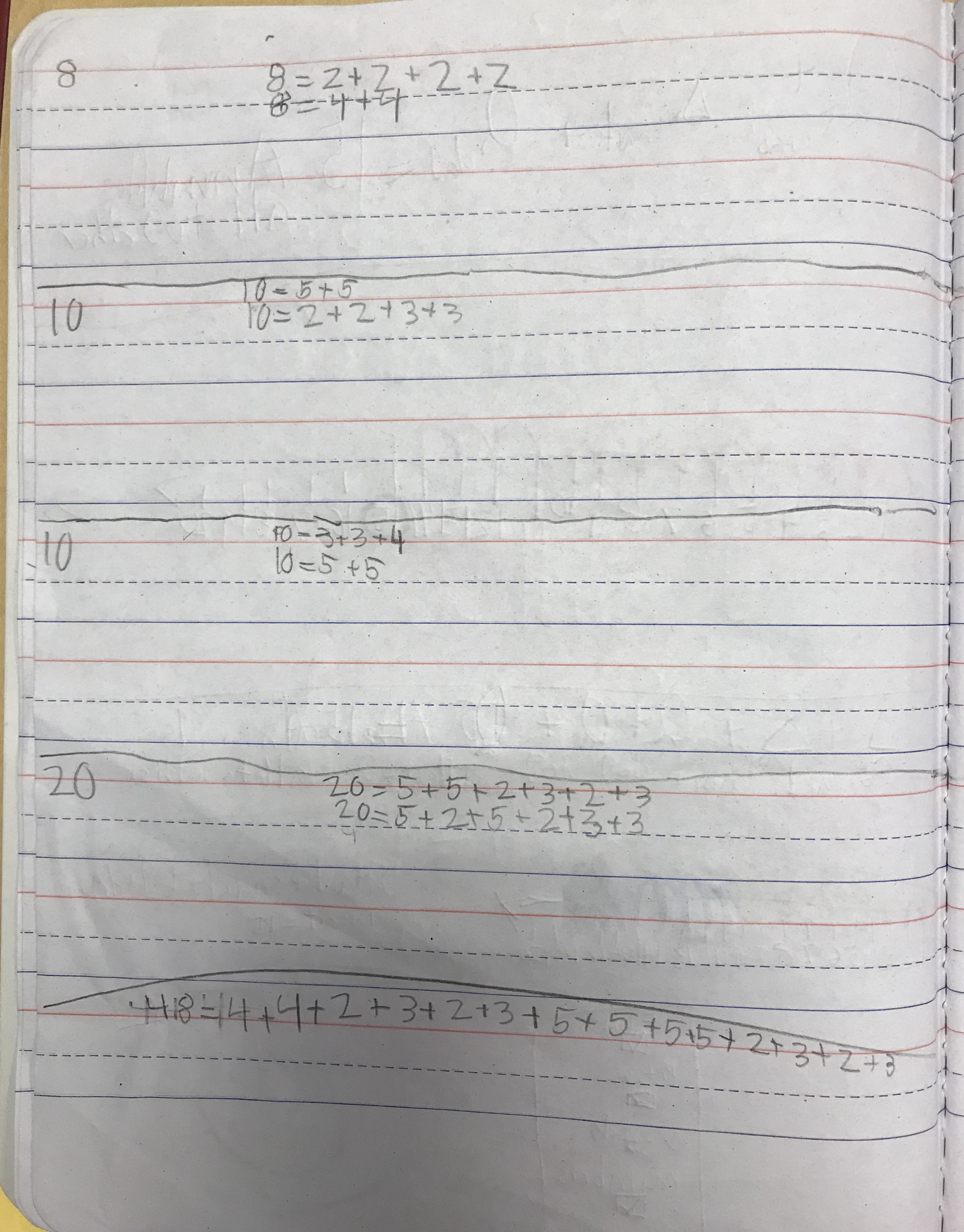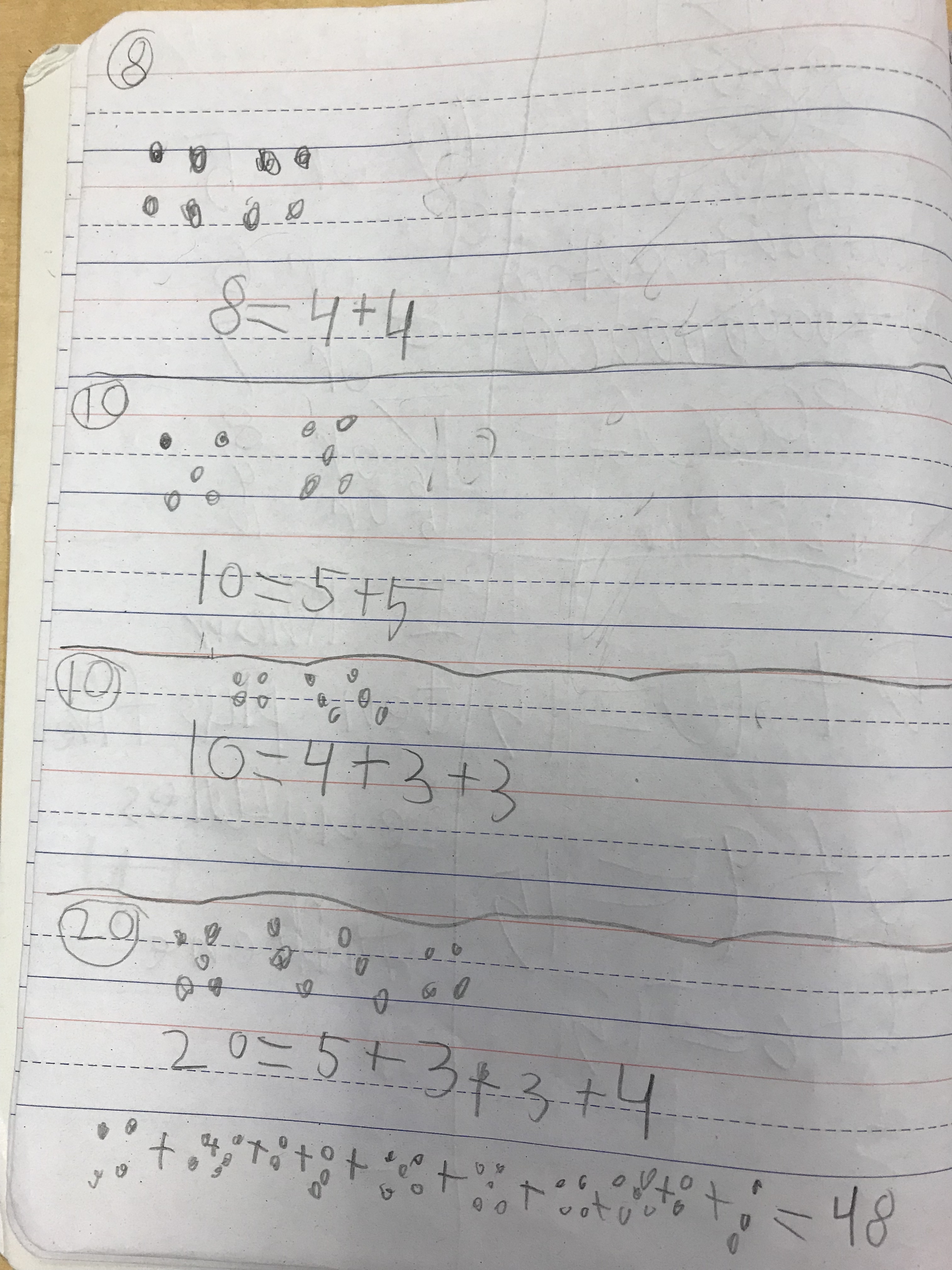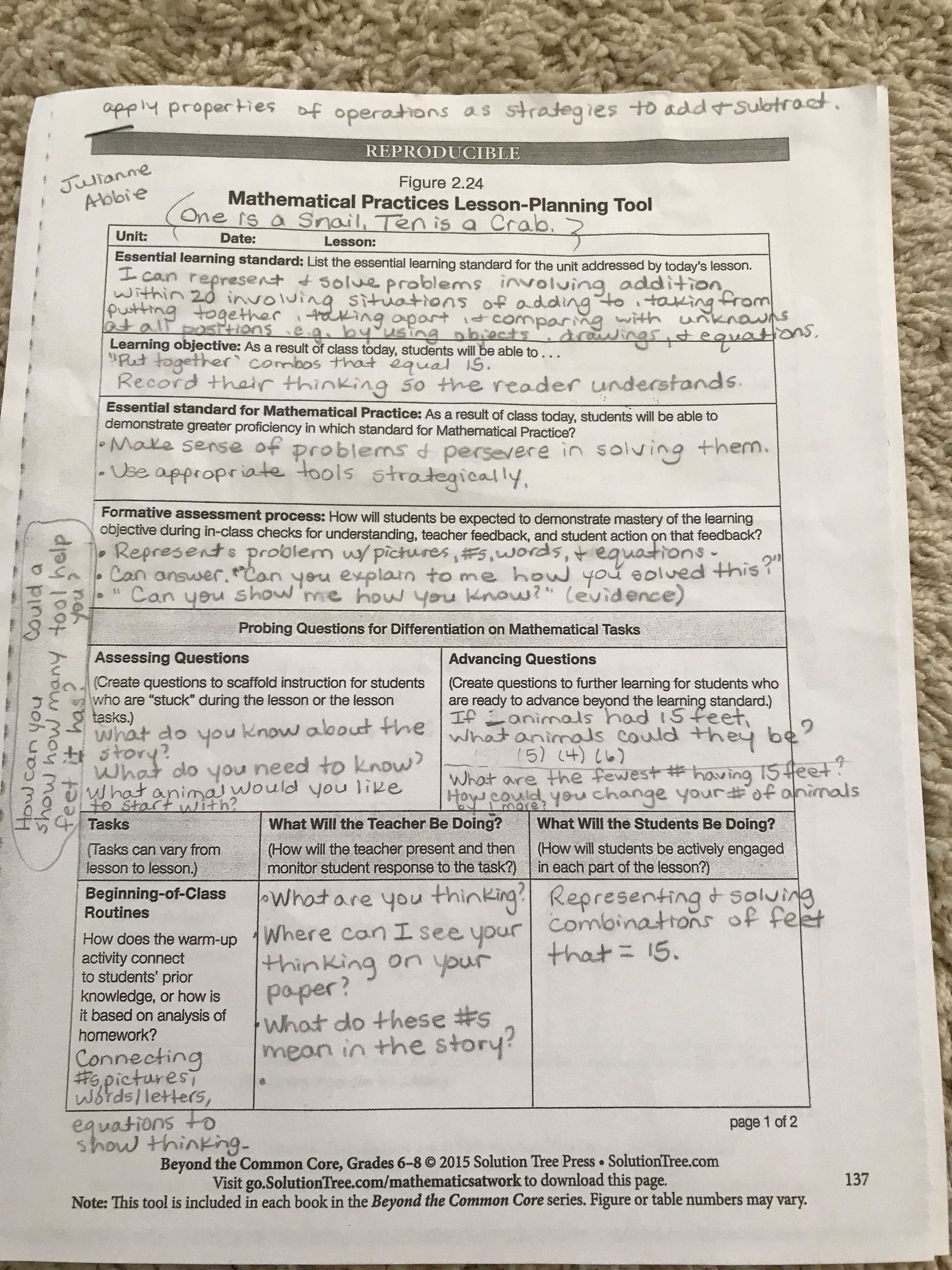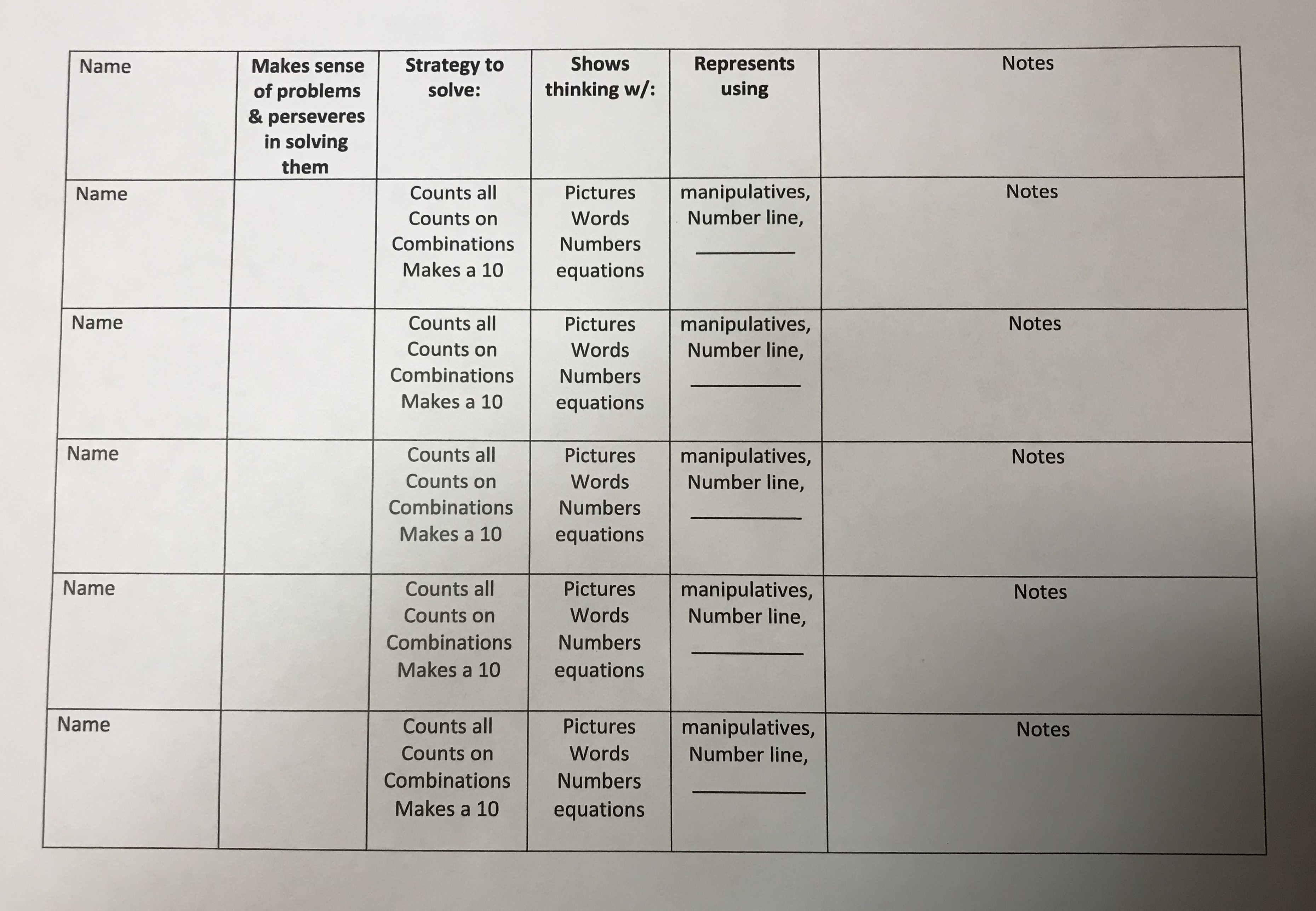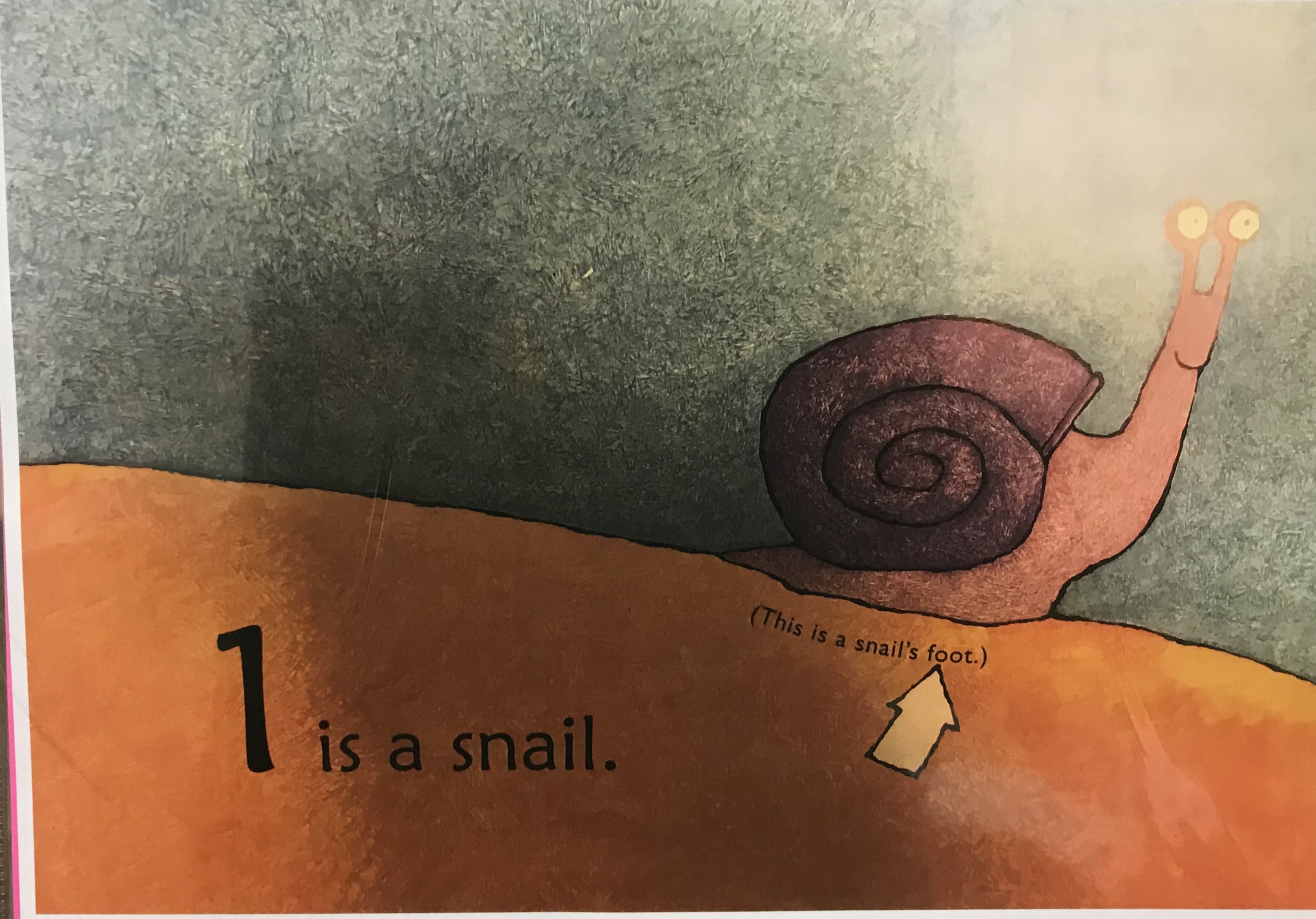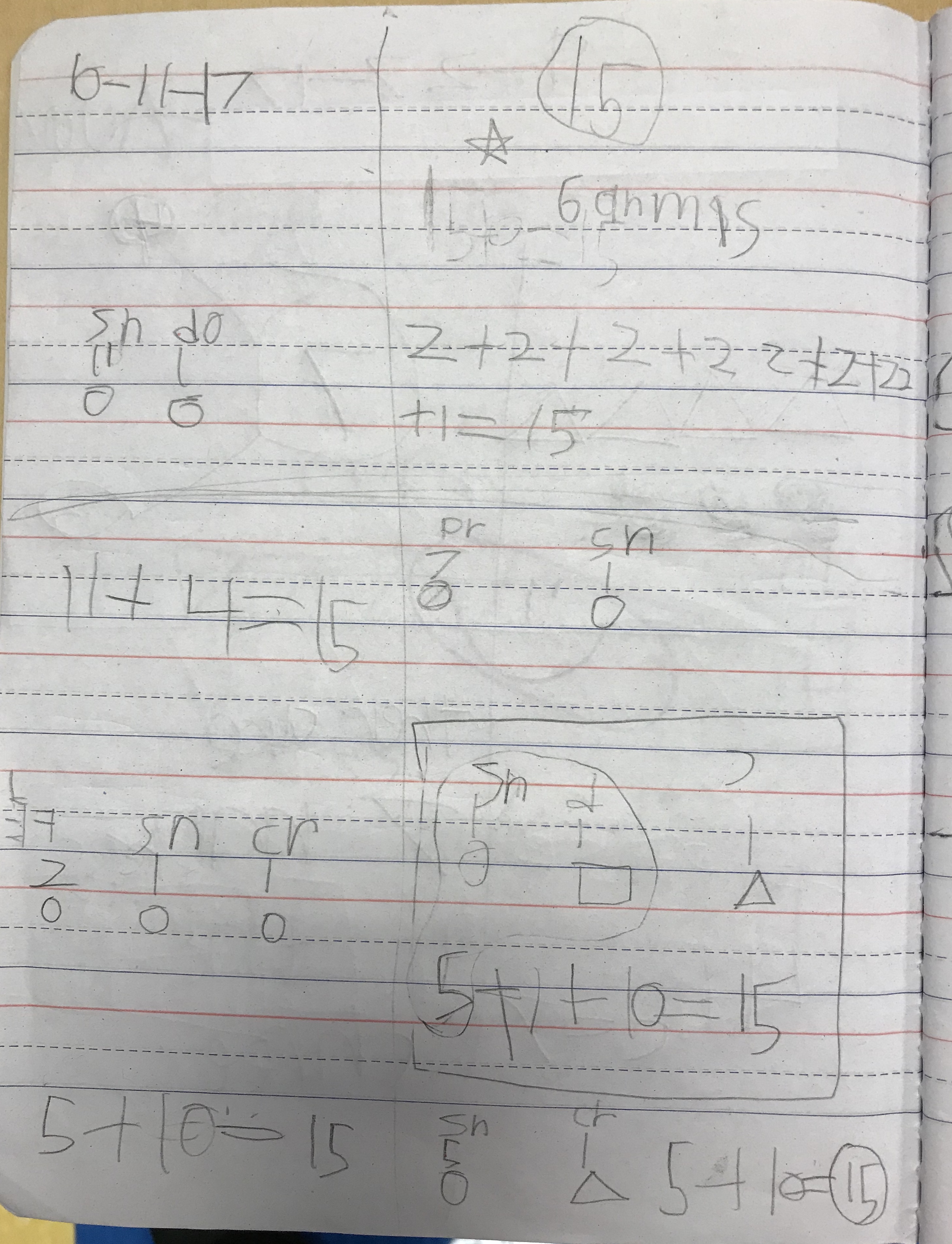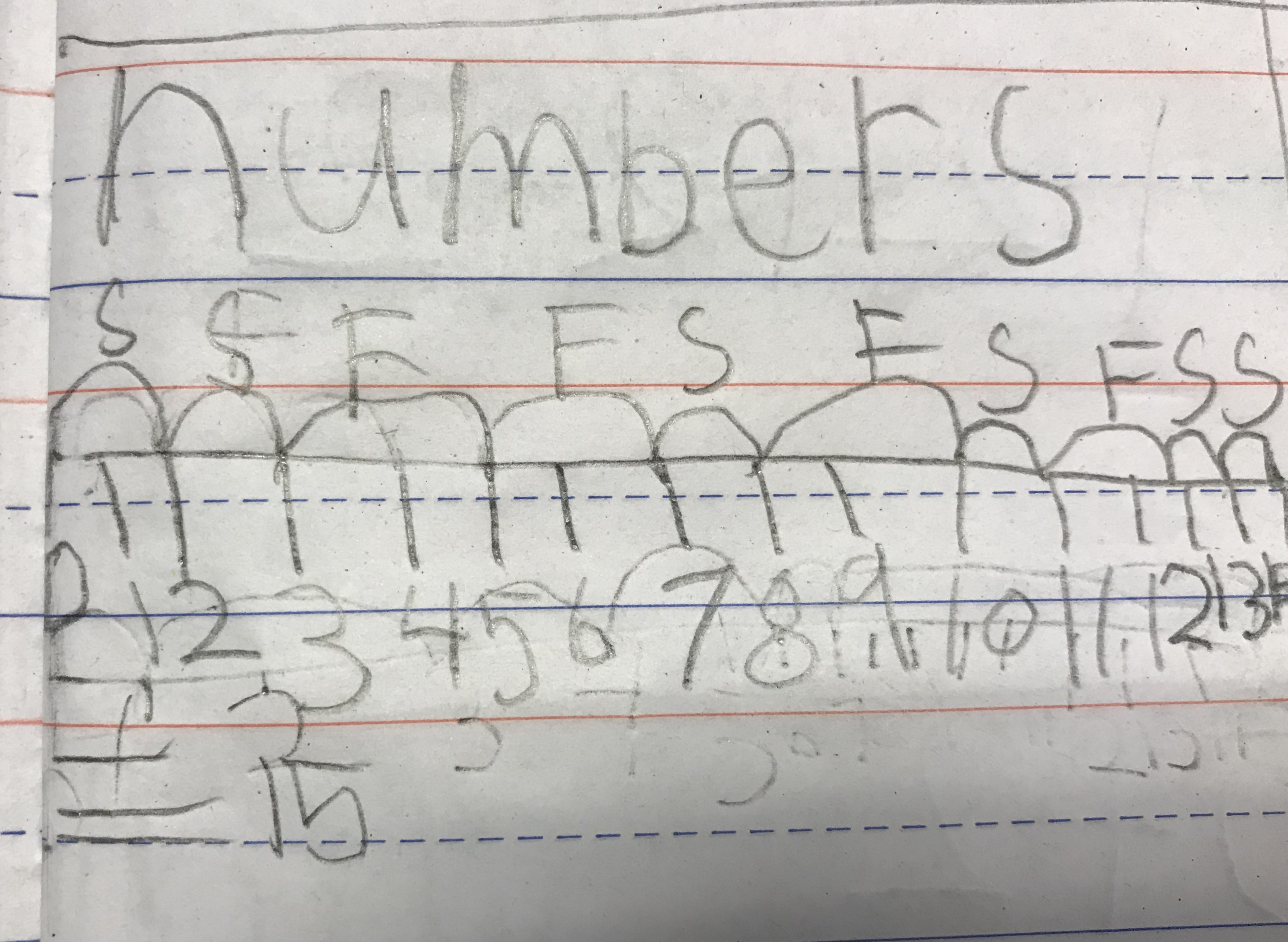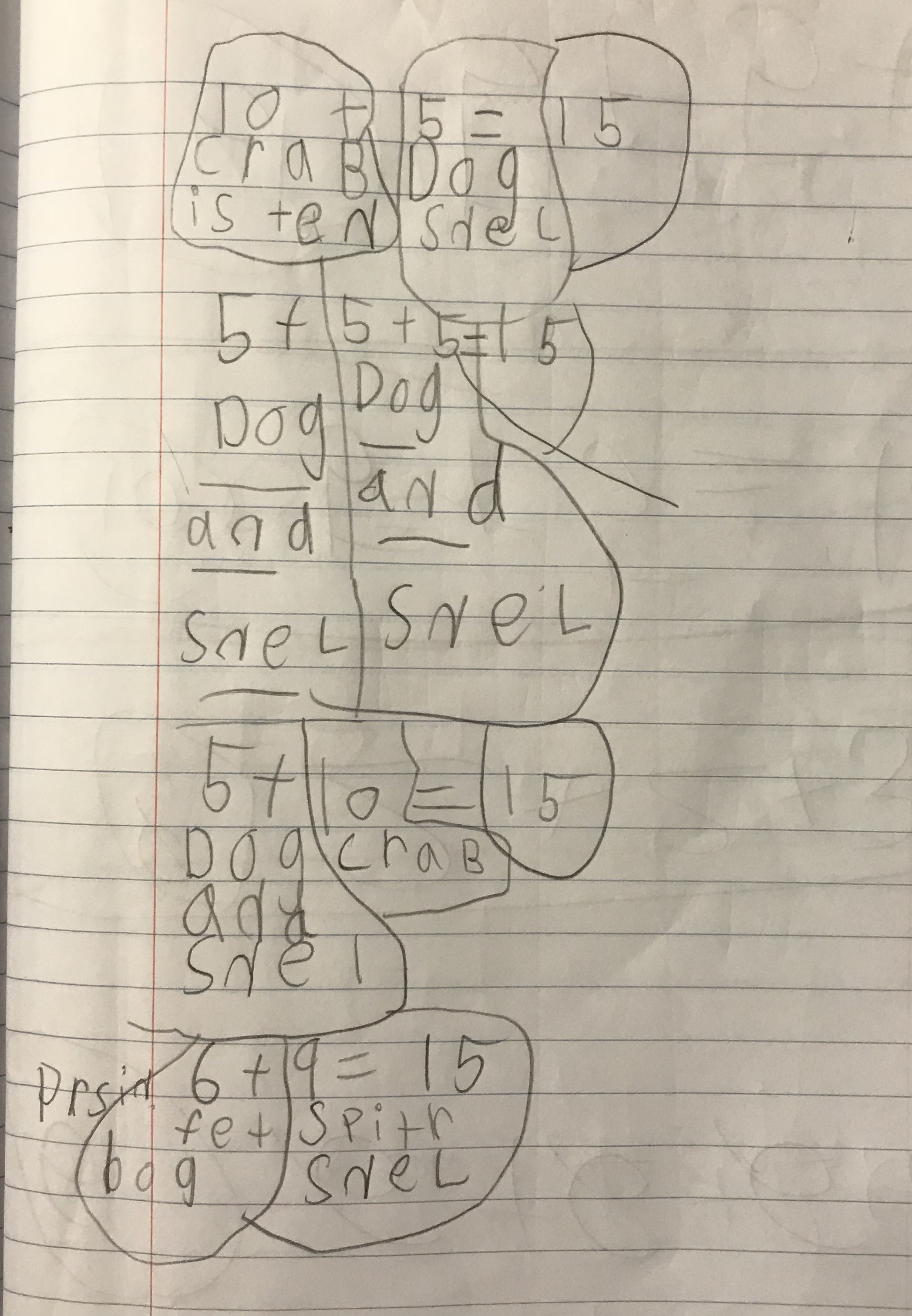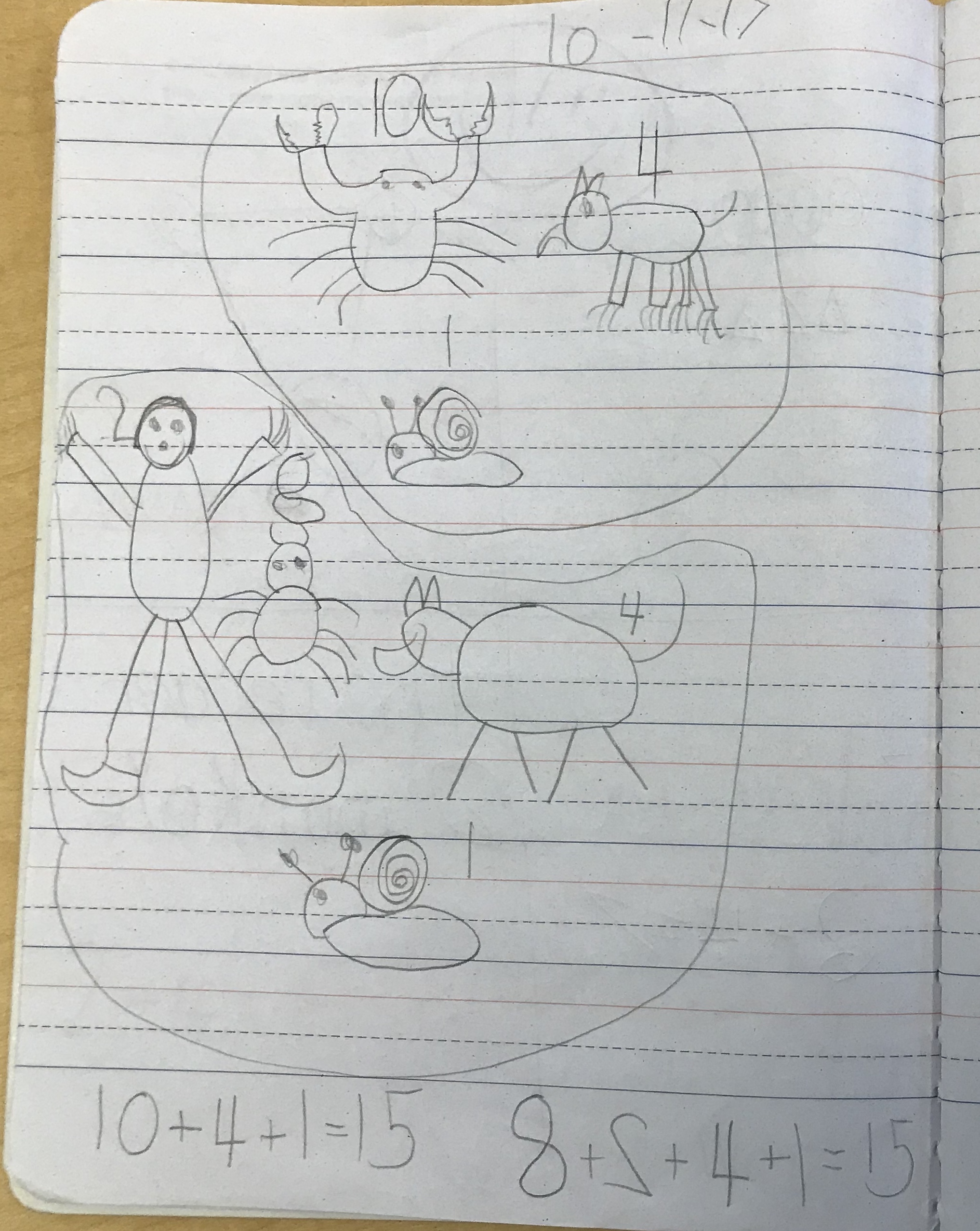“Children who understand the concepts of more and less understand the relative size of numbers, and the particular differences between them.” “When changing one number to another, children begin with a number and then add on counters or take away counters in order to end up with a specified amount.”- Kathy Richardson.
In Pre-K, our students are strong counters. Additionally, teachers are asking students to make equivalent sets via the counting jar lesson. Students are comparing collections, and being asked which collection has more or fewer objects in it. And some students answer the question, “How many more or fewer are in one collection than in another?”
But the words of Kathy Richardson kept reminding us about the idea of changing numbers; that 4 isn’t just 4 and 6 isn’t just 6 but 4 is inside 6.
Thinking about the lesson ‘Grow and Shrink’, included in Developing Number Concepts: Counting, Comparing, and Pattern, but with a winter context, this became our lesson for Pre-K… and Early Learners!
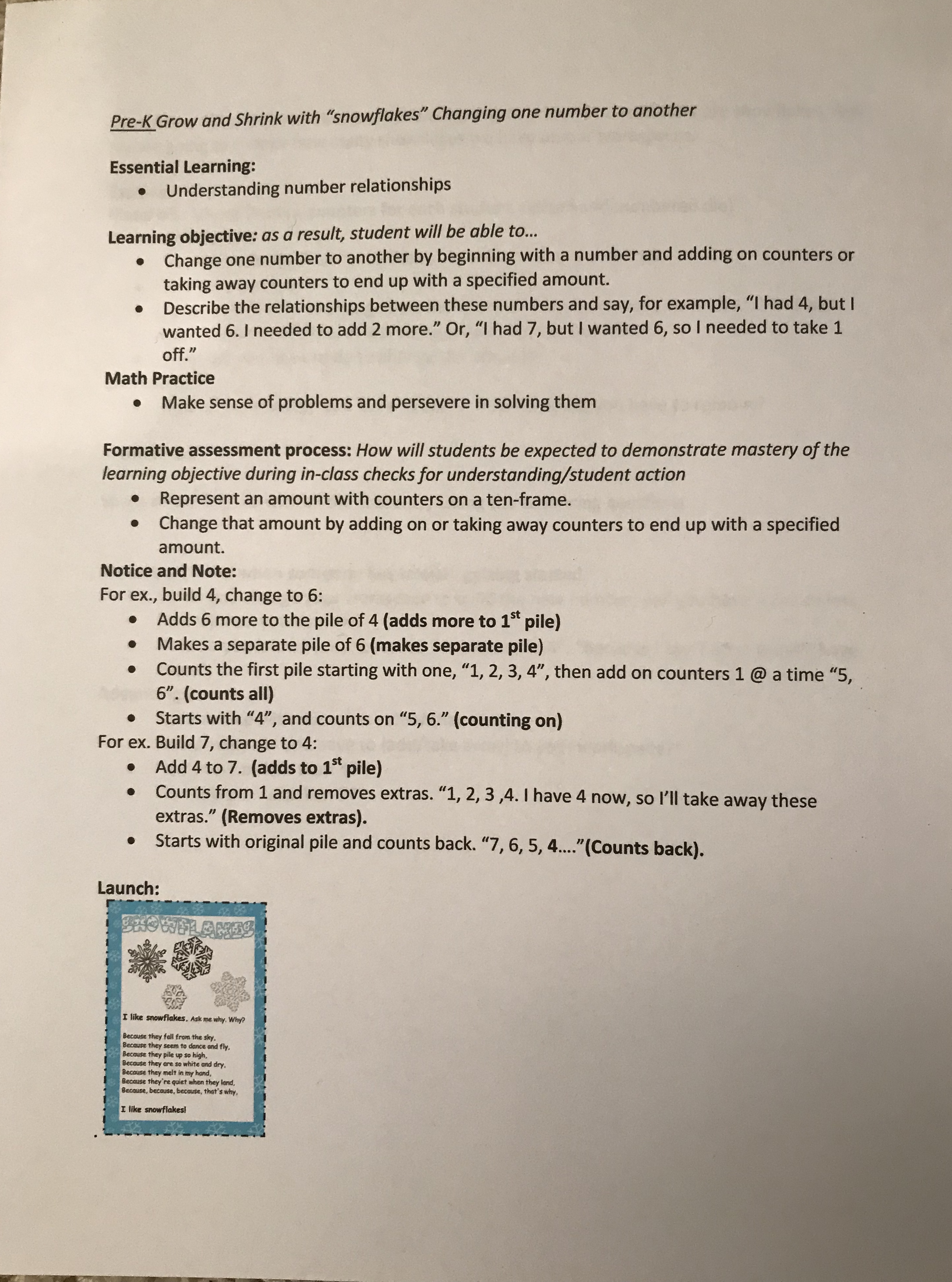
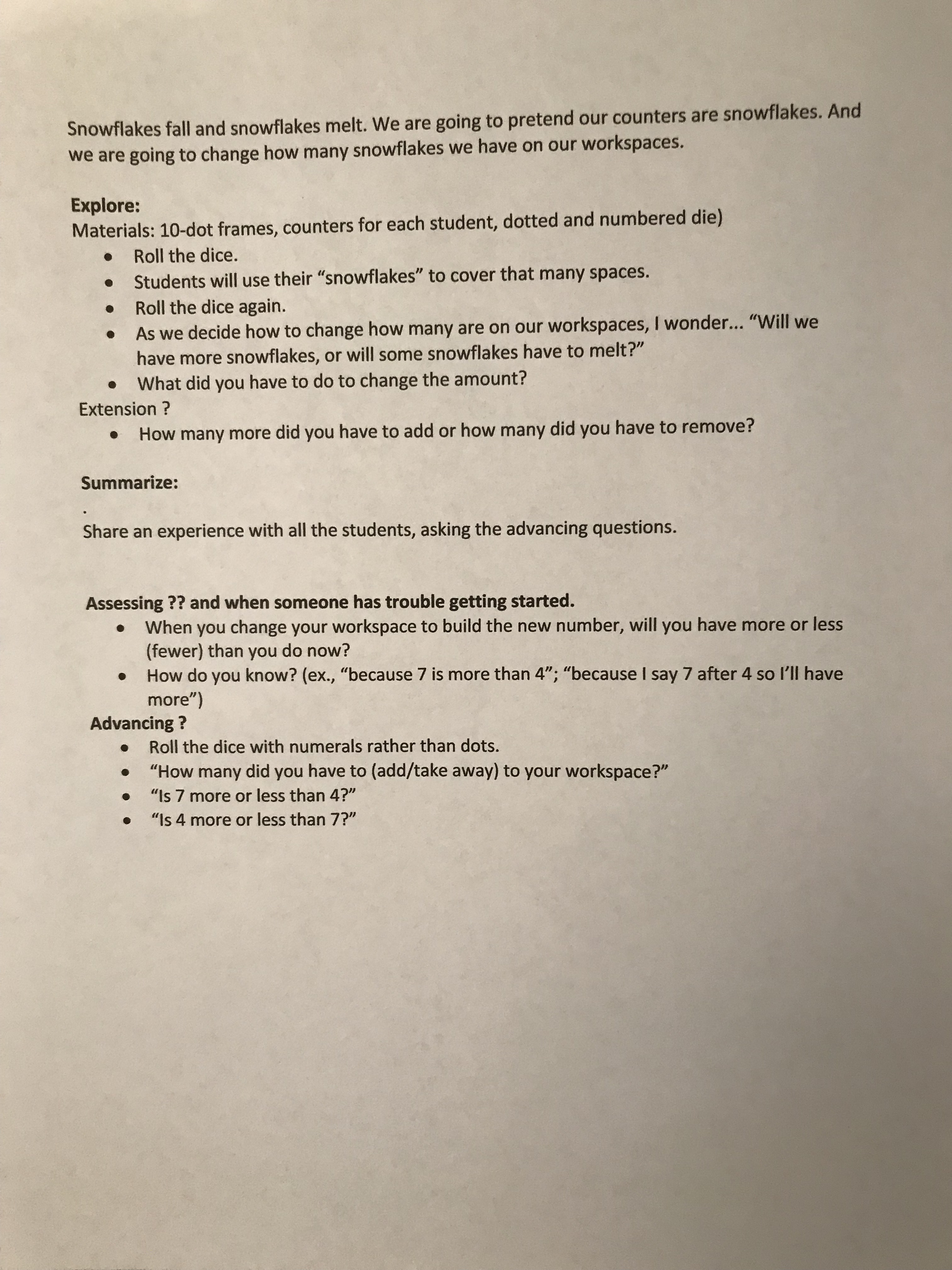
Included with the plan was an illustrated note and note recording sheet helping us think developmentally about how students might approach the task.
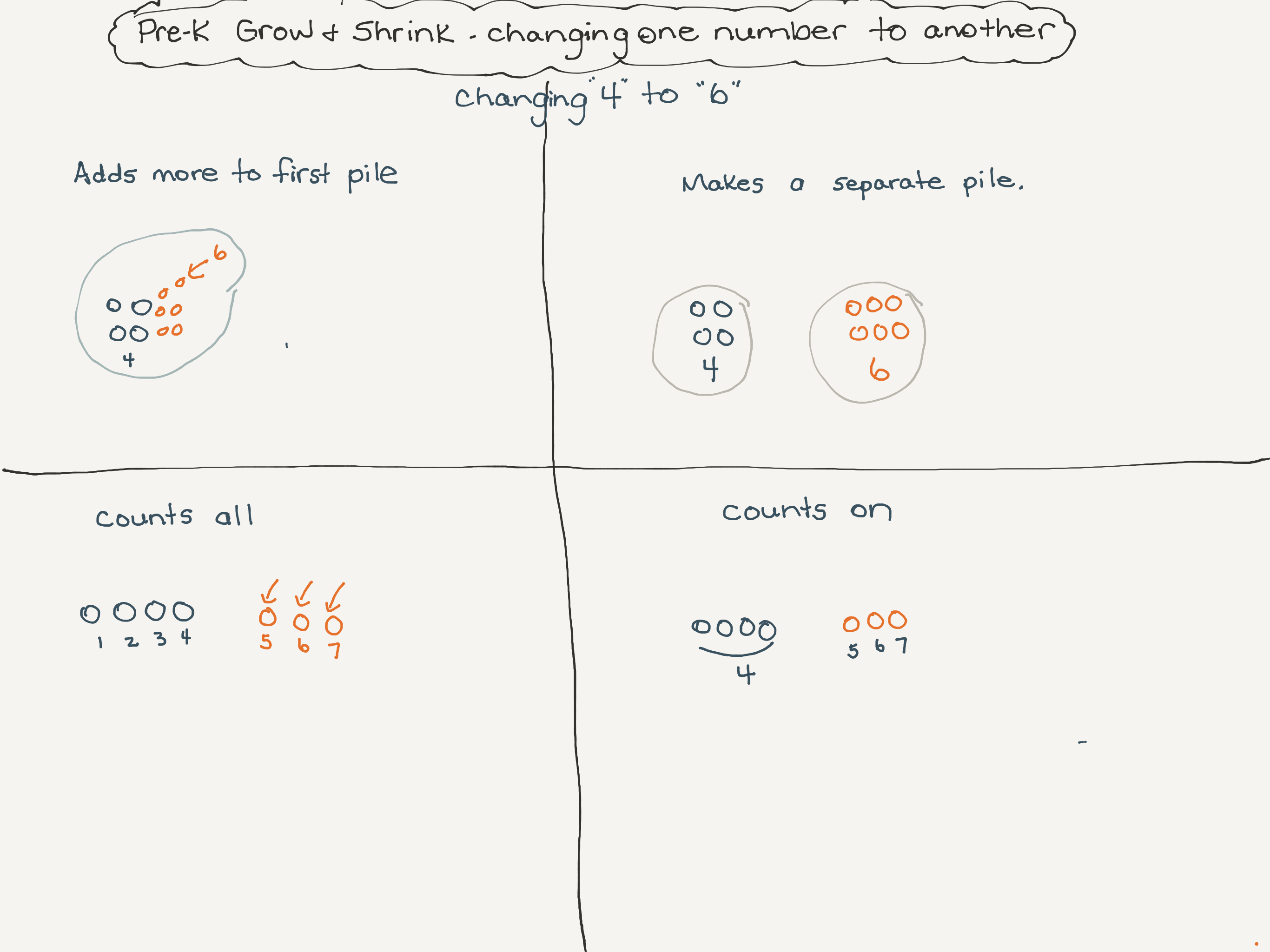
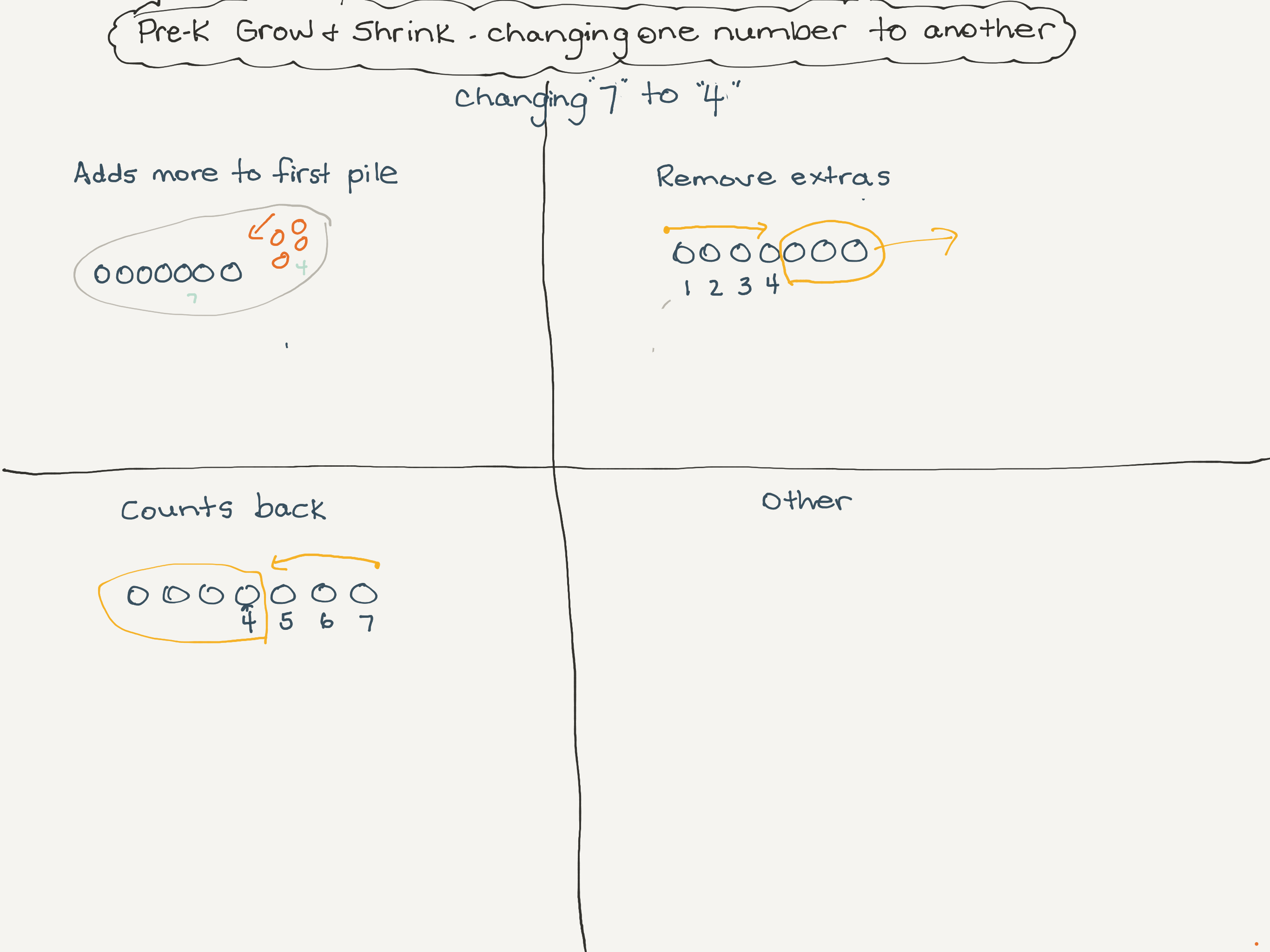
Launch
Oops! Even before I got to the classroom, I modified the plan.
We began with the poem and discussed how more snow can fall and there can be more of it, or how sometimes snow can melt (in the poem, it melts in your hand).
Here’s the modification.
It made better sense to ask students to be snowflakes before giving them the tools to represent them. Down went 10 pieces of tape in two rows of 5 in the center of the carpet (for Early Learners we started with 5 pieces),and, boom, students became snowflakes! These snowflakes would either melt, or be joined by additional ‘snowflakes’, depending on the number of dots showing on the die.
Additionally, wanting these mathematicians to be able to play this snowflake game independently, we needed to model how to manage those dice! So… with a large sized die and bowl, I demonstrated covering the top of the bowl with my hand, shaking three times, “Shake, shake, shake!” and counting the dots on the face of the die looking up at me.
Explore
Following this ‘students as snowflakes’ experience, our mathematicians used ten dot workspaces and a bowl of counters/snowflakes to change the snow totals. Students became the dice rollers, taking turns using an applesauce cup and regular sized die, placing a small hand over the top of the cup, and saying, “Shake, shake, shake!” three times!
Side bar…
I have the honor of co-teaching in Pre-K and Early Learner classrooms. After one lesson in a Pre-K class, I went straight away to try it out with Early Learners. Although these 3 year olds have not had as many experiences as the Pre-K students (this is their first year at our school), as Mike Flynn encourages, these Early Learners have had and must continue to have many many opportunities to count and think about numbers, quantities, and their relationships.
So why not try it?
Therefore… notice and noting happened with Pre-K students and these Early Learners (pictured below!). As you read what we noticed, can you decide in which box each would be noted?

This student took off some counters and is counting to see if he has two counters now.
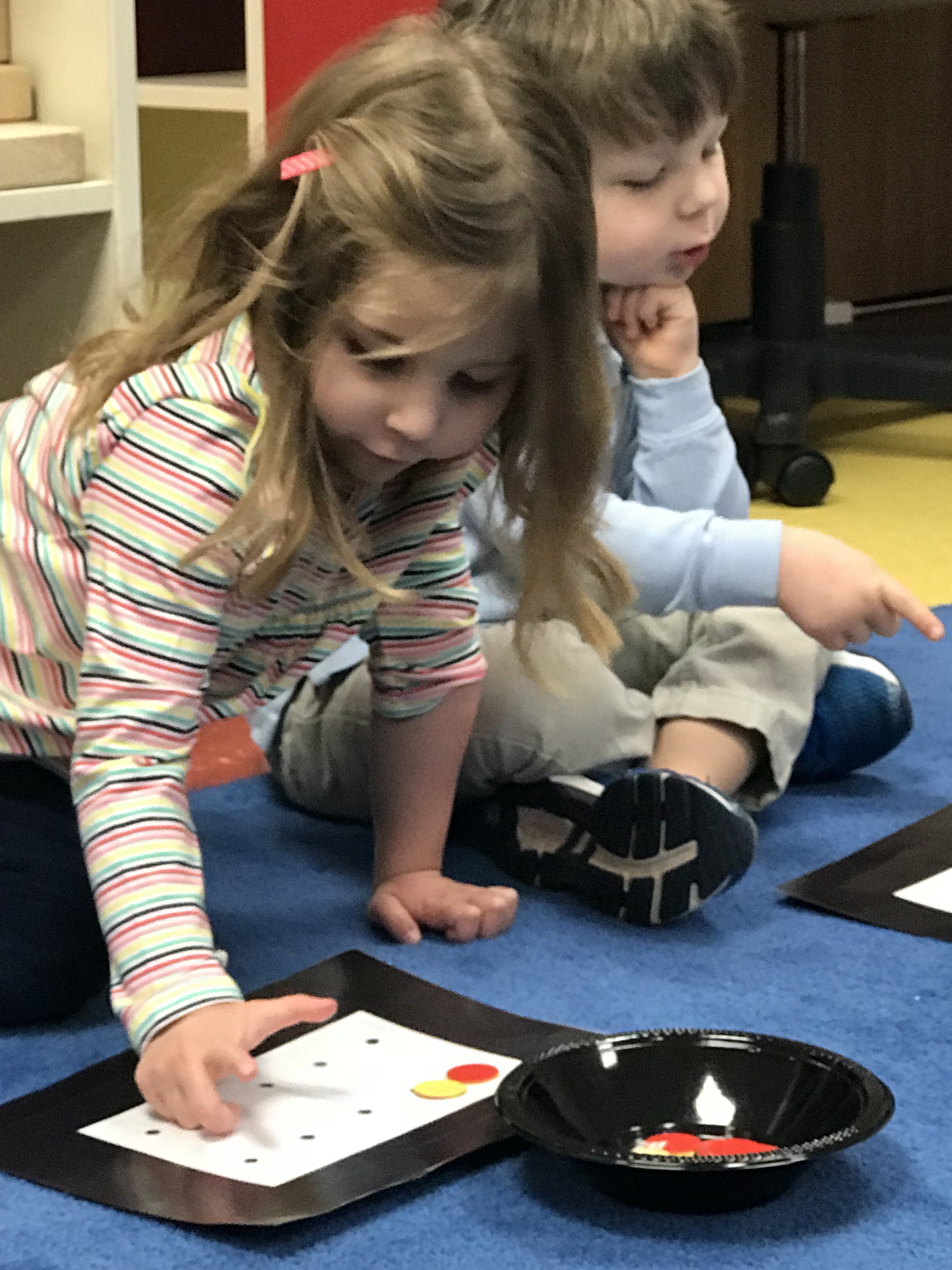
She is thinking, I have 2 counters, and I need to change it to 5. What do I need to do?
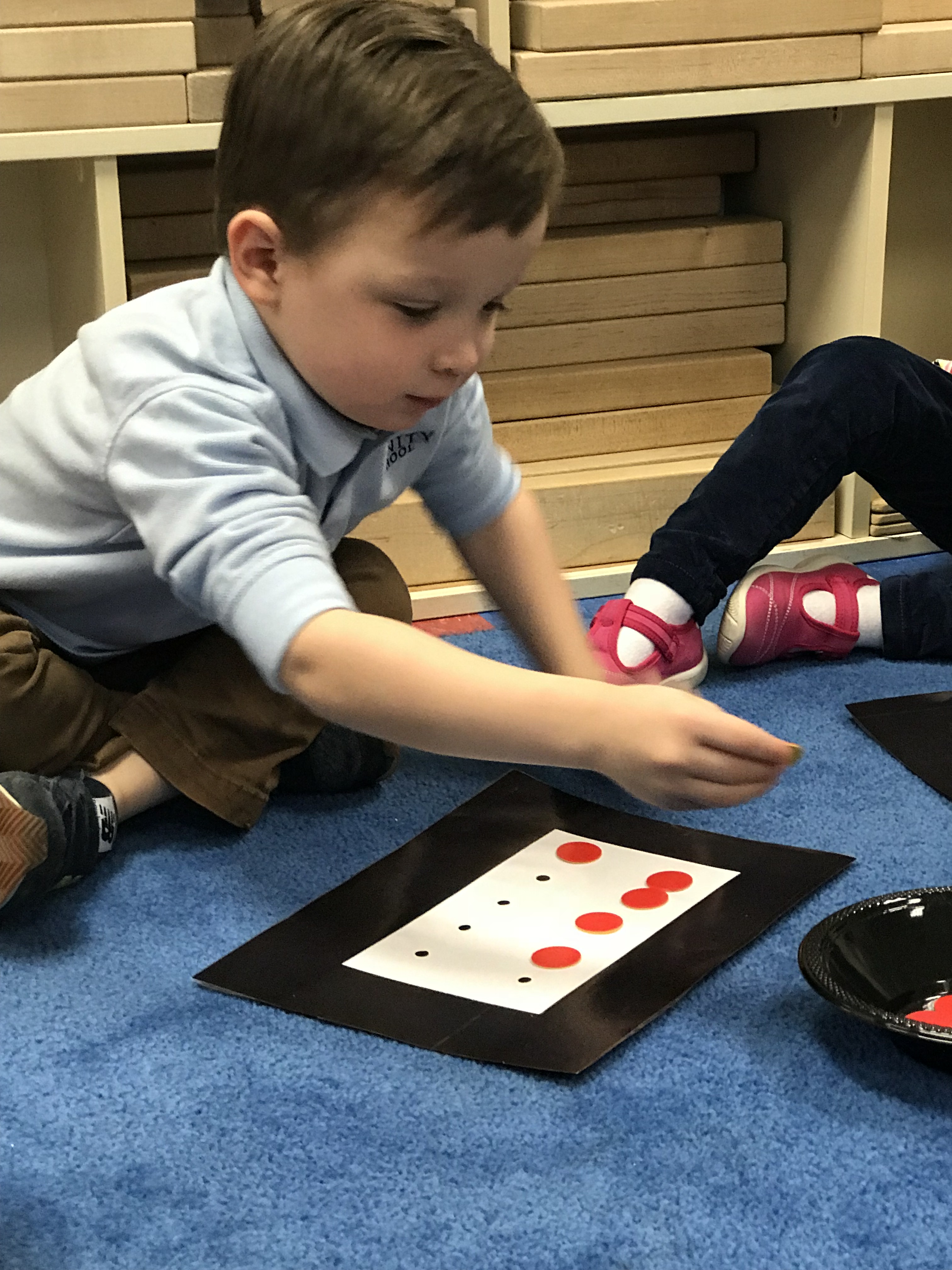
He had 4 counters. He is putting some more on and then he will count to see if that was enough to change it to 6.
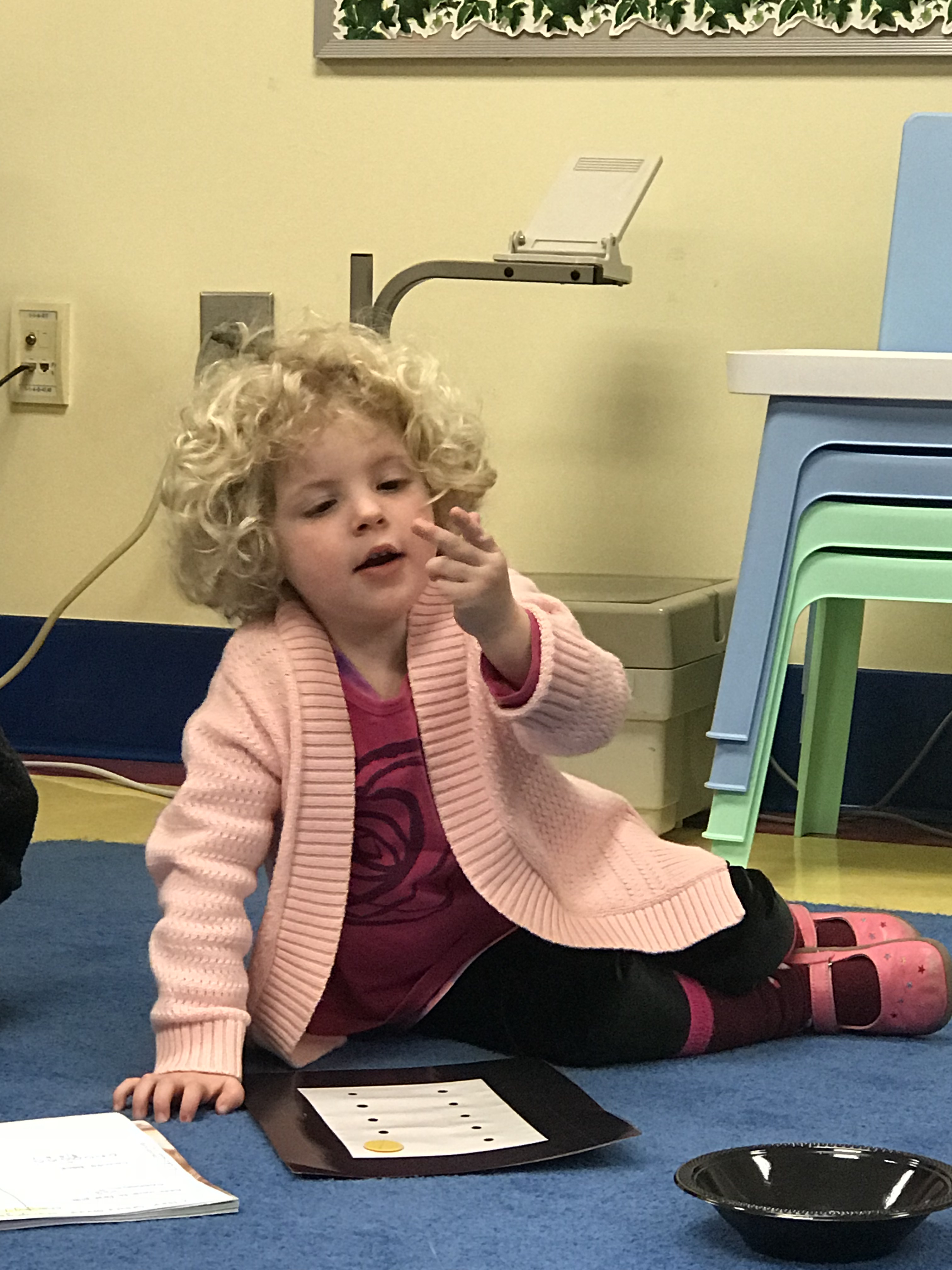
As students worked, we asked,
- “If you are changing the number of snowflakes from (this) to (this), would you need to put more on or take some off?”
and
- “When you change from (this) to (this), will you have more snowflakes? or fewer?”
And sometimes, we asked,
- “How many more snowflakes would you need to (add or take away) to change the number of snowflakes?” And the Early Learner shown above said, “2!”
Sometimes, all we have to do is ask!
Summarize
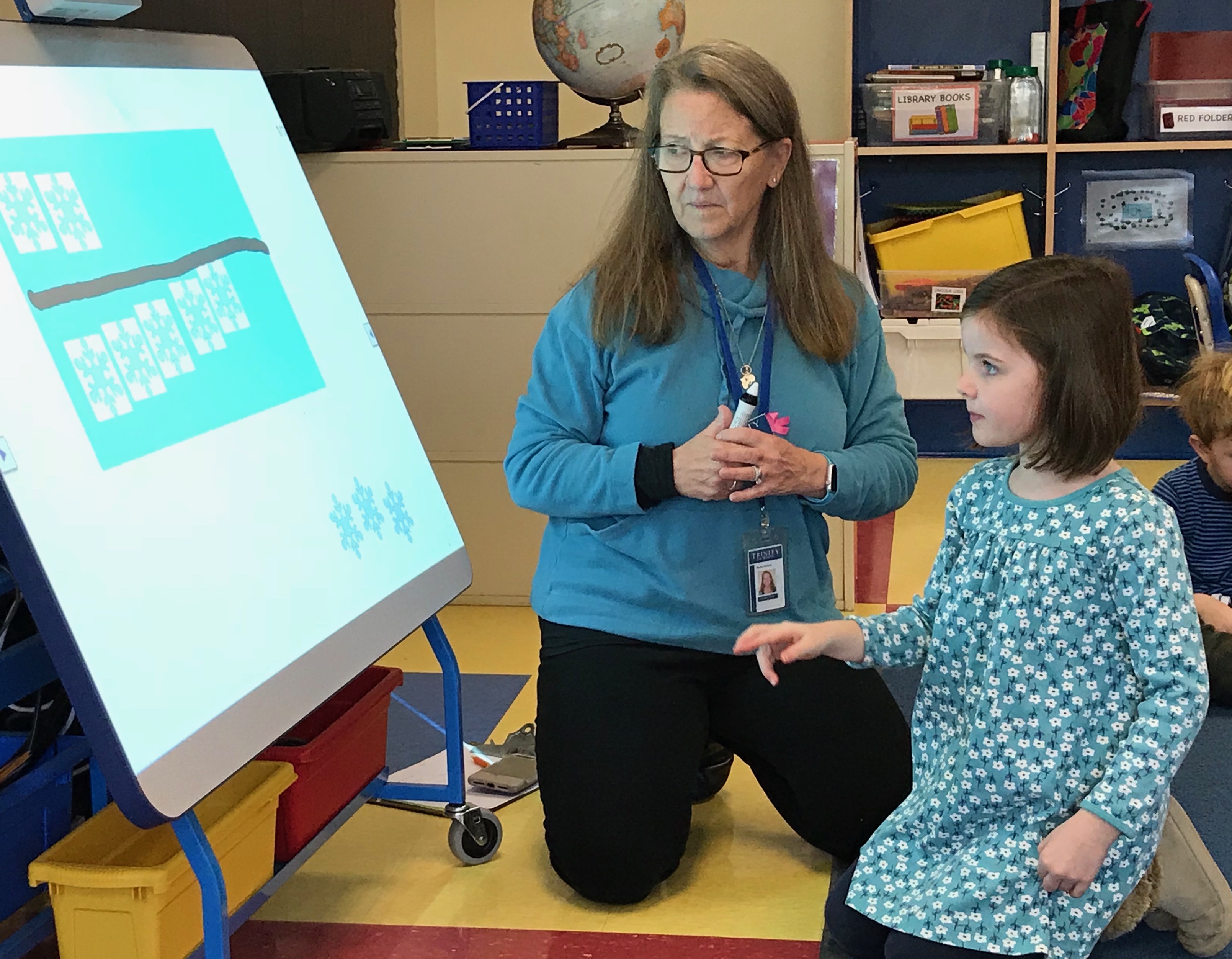
The Pre-K teacher in this class created a workspace and snowflakes students could move. It was a helpful tool for her during their second lesson’s launch, but also during that lesson’s summarize.
For this summarize, thinking about the size of numbers and the concepts of more and less, I took advantage of the snowflake context, and asked a comparing question!
“Claire had 2 snowflakes and Walker had 6 snowflakes. Claire, could you show us your 2 snowflakes? And Walker, could you show us your 6 snowflakes?”
Did you notice how Claire and Walker lined them up so neatly on the workspace???? Wow! I anticipated they might have to match them to answer. Nope.
Then I asked, “Who has more snowflakes, Claire or Walker?”
“Walker, because we you count, 6 comes after 2.” Amazing!
Then I asked, “How many more snowflakes does Walker have than Claire?”
In the photo, this mathematician is deciding what she thinks.
Isn’t that pondering face amazing? Actually, we are both pondering!
What did we learn?
When students had 4 and needed to change to 6, we noticed and noted…
- Adding 6 more to the workspace.
- Counted the 4 counters by 1s and continuing to count by 1s adding the needed counters. (1, 2, 3, 4, 5, 6)
- Had 4 counters, didn’t recount them, and counted 2 more on. (5, 6)
- Had 4, needed to change to 6, just put some more on, then counted to see if they actually had 6. (1, 2, 3, 4, 5, 6,7, 8) Then said, “Oh I’ll take off the extras and then have 6”)
- Had 7, needed 4, isolated the 4, and took the rest off. (1, 2, 3, 4, 5, 6, 7) “I see these 4, I’ll take off the extras”)
- Answer the question, “What did you have to do to change the snowflakes from 4 to 6? “”Put 2 more.”
We didn’t notice any students counting back to change a larger amount to a smaller one.
What fabulous, rich data!
What’s next?
- After noticing and noting during the whole group, all of the classrooms wanted to follow up with chances to observe students in small groups.
- Knowing that as we continued to notice and note we would want to use that data to meet students where they were, we thought about ways to differentiate. Initial considerations include:
- numeral dice rather than dotted dice.
- dice having higher numbers – for example 3, 4, 5, 6, 7, 8.
- using the blank side of the workspace rather than the 10 dotted side.
- using cards rather than dice.
- continued thoughtfulness about the range of numbers and their differences we offer students. A student using a 1 – 6 dice, changing that total by 1 or 2, might “just know” how to change it. But that same student, using 1 – 6 and asked to change the total from 2 to 6 (a difference of 4) might not “just know”. That student might still need practice with 1 – 6 dice, discovering a strategy for a bigger difference.
Flynn, Michael. Beyond Answers: Exploring Mathematical Practices with Young Children. Stenhouse Publishers, 2017.
Richardson, Kathy. Counting, Comparing and Pattern. Seymour, 1999.
Richardson, Kathy. How Children Learn Number Concepts: a Guide to the Critical Learning Phases. Math Perspectives, 2012.
